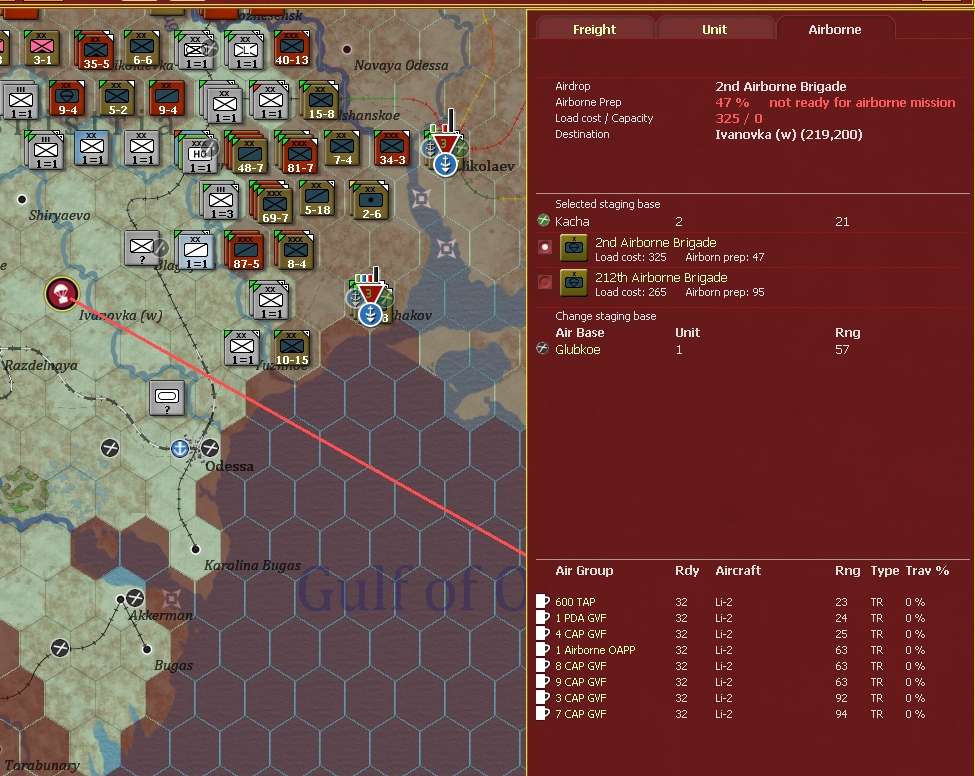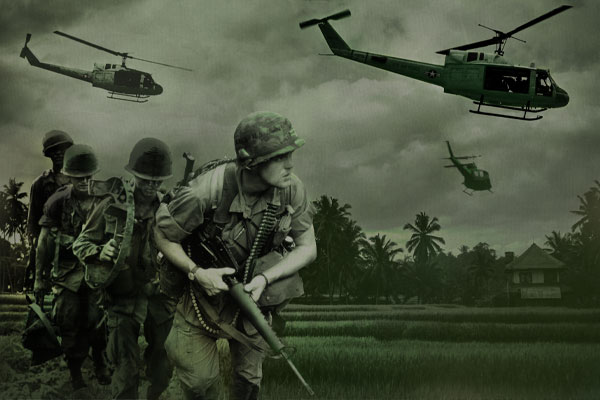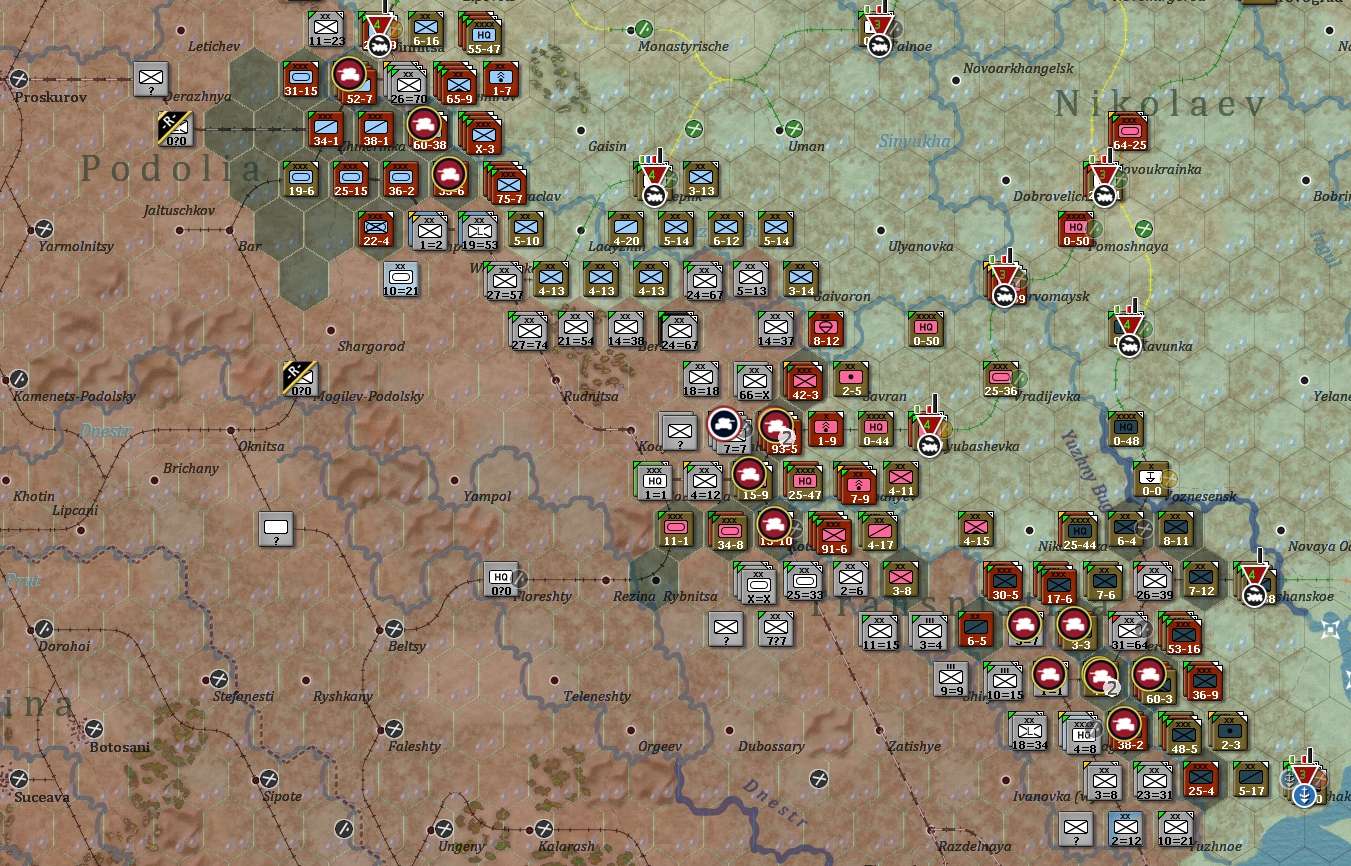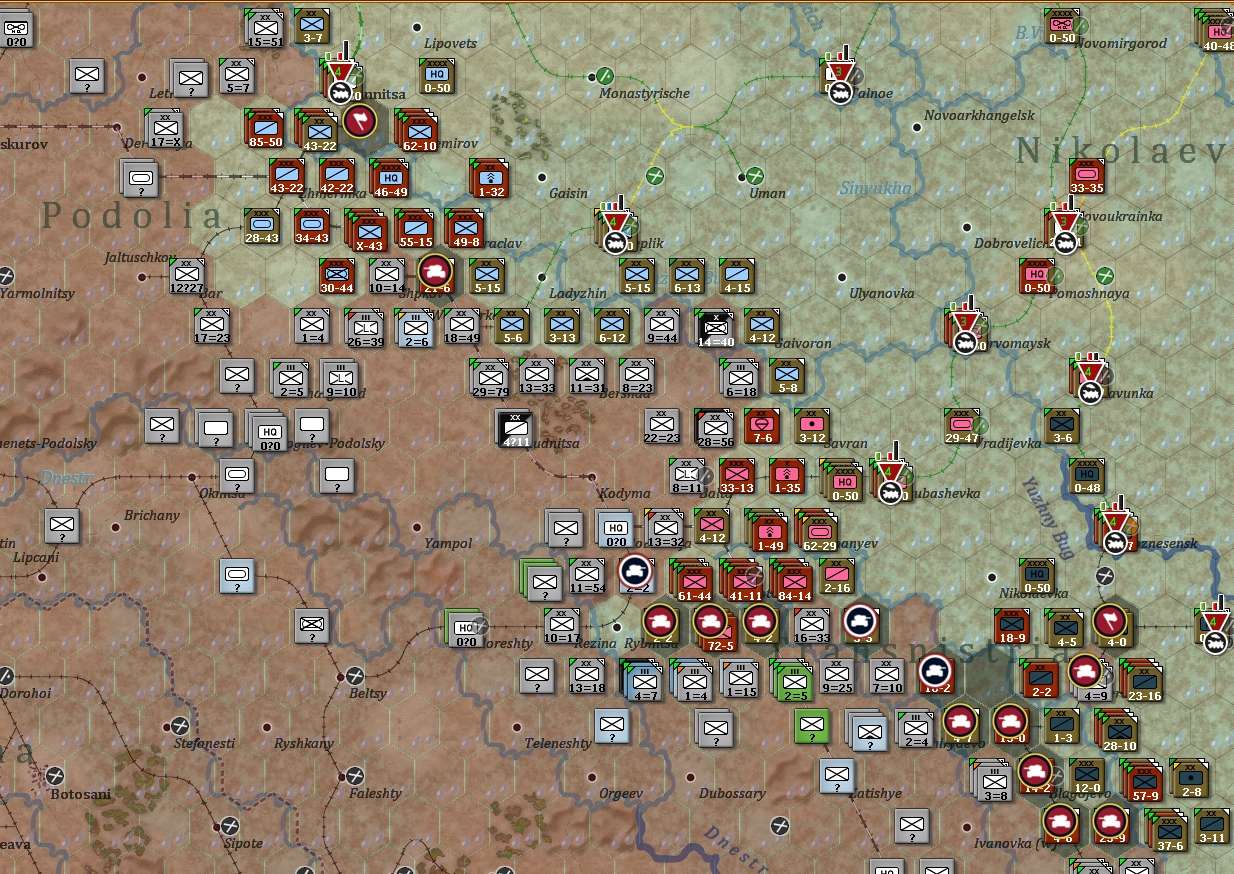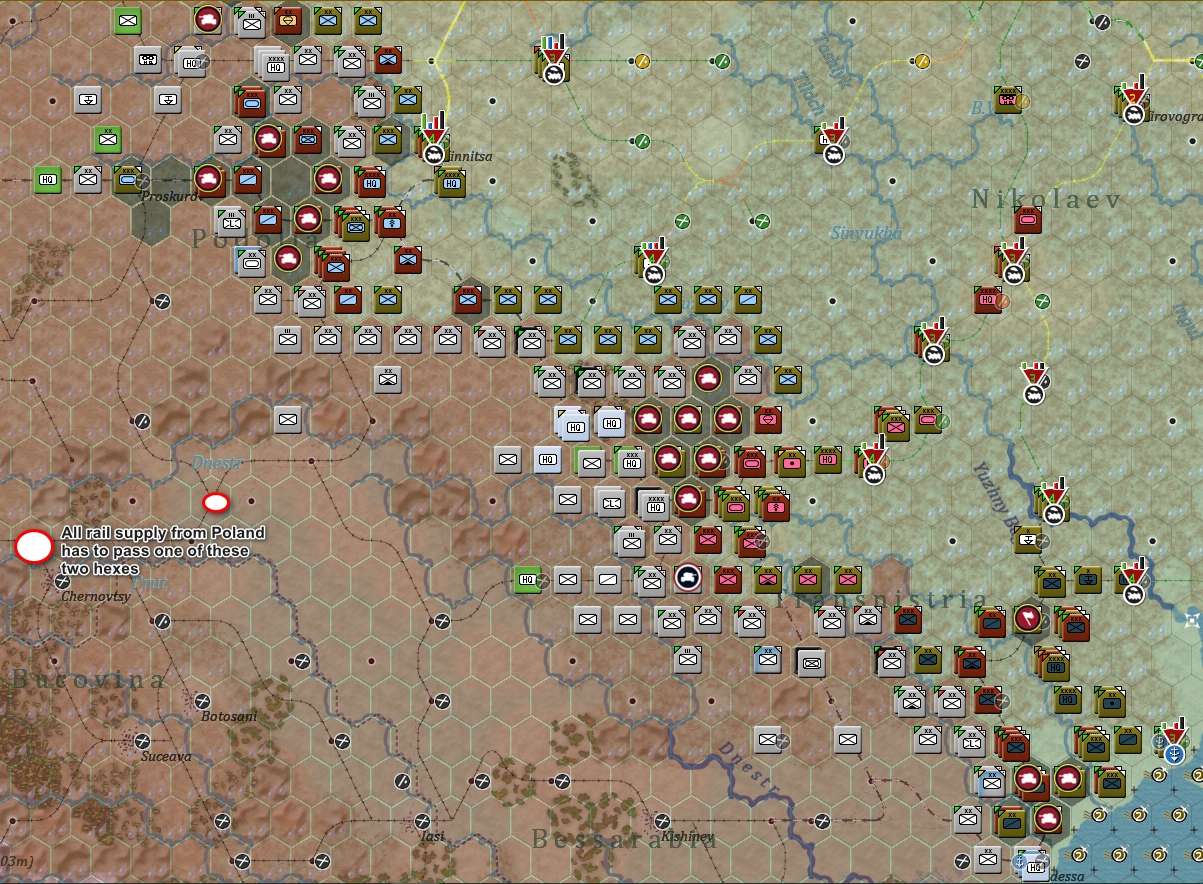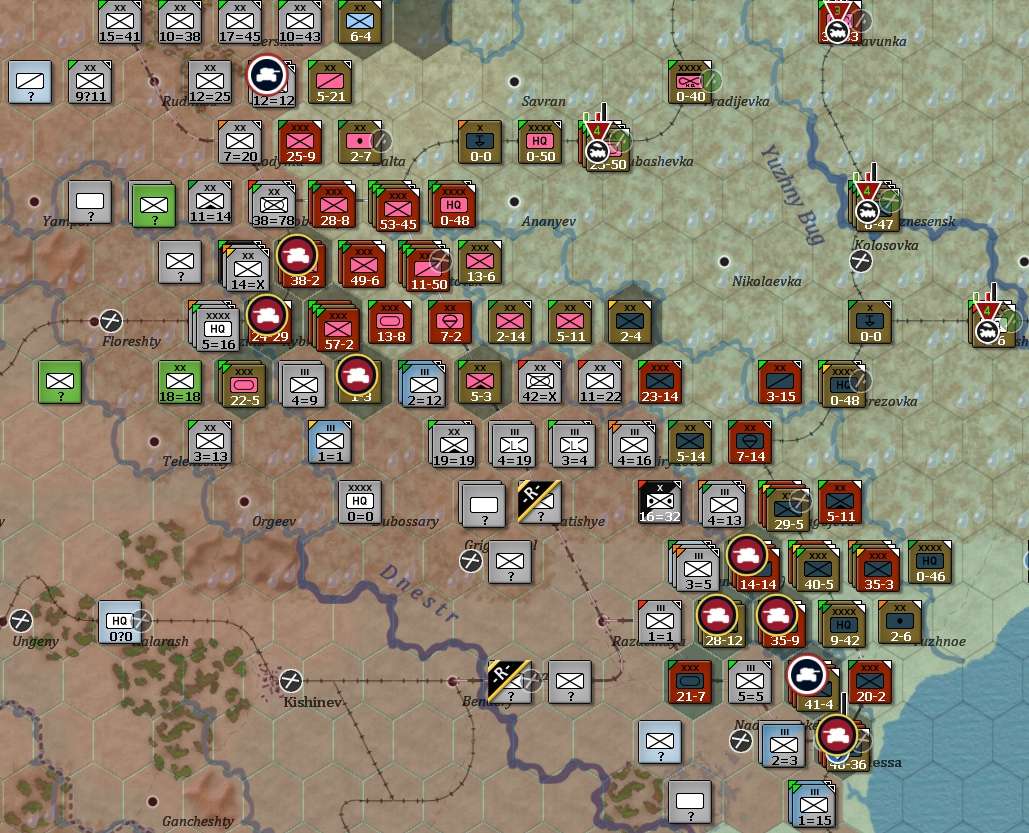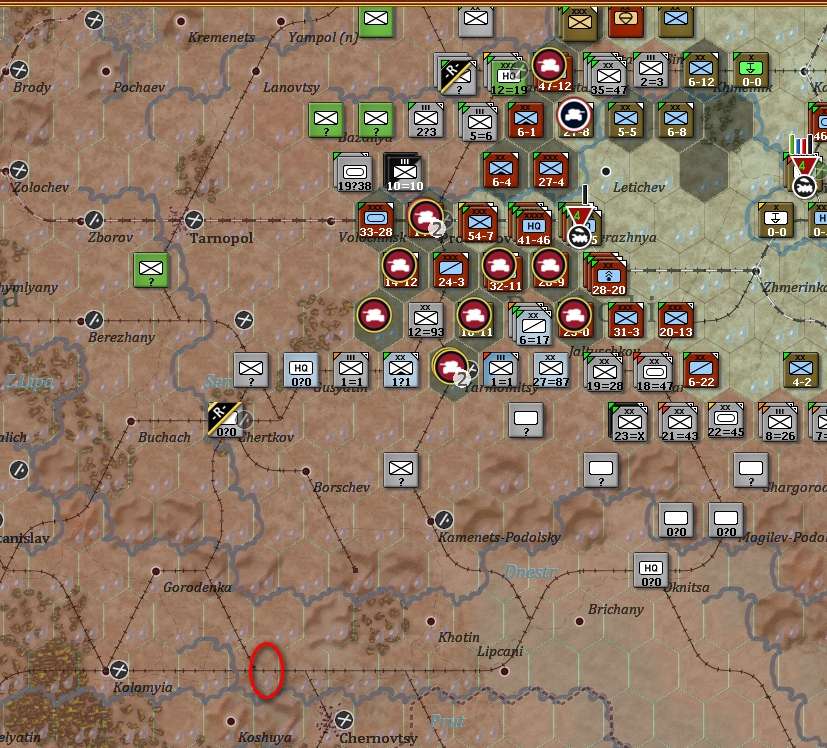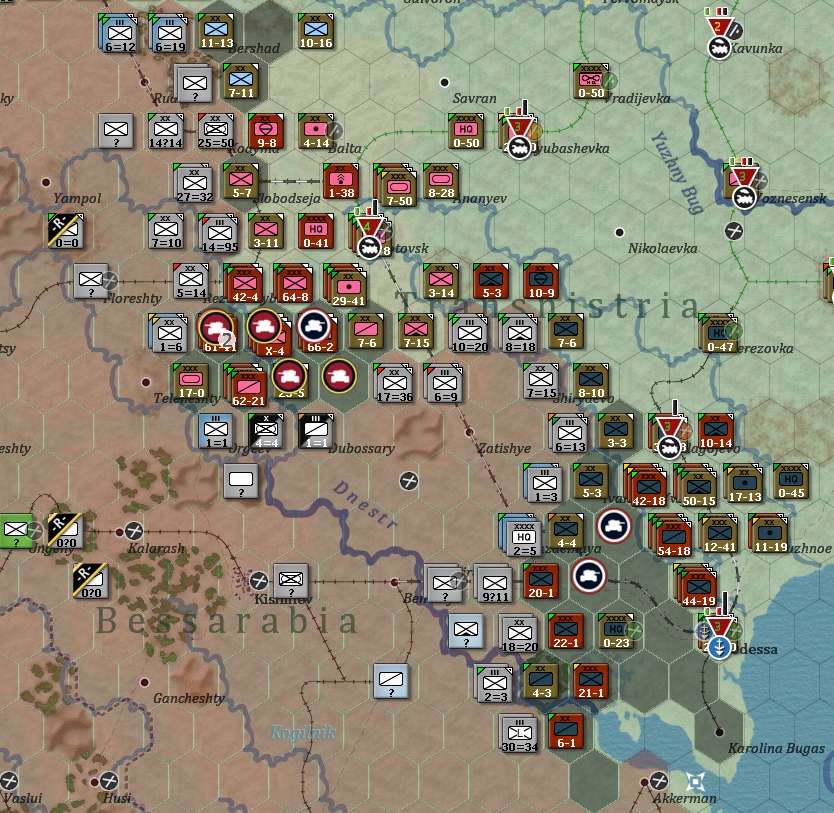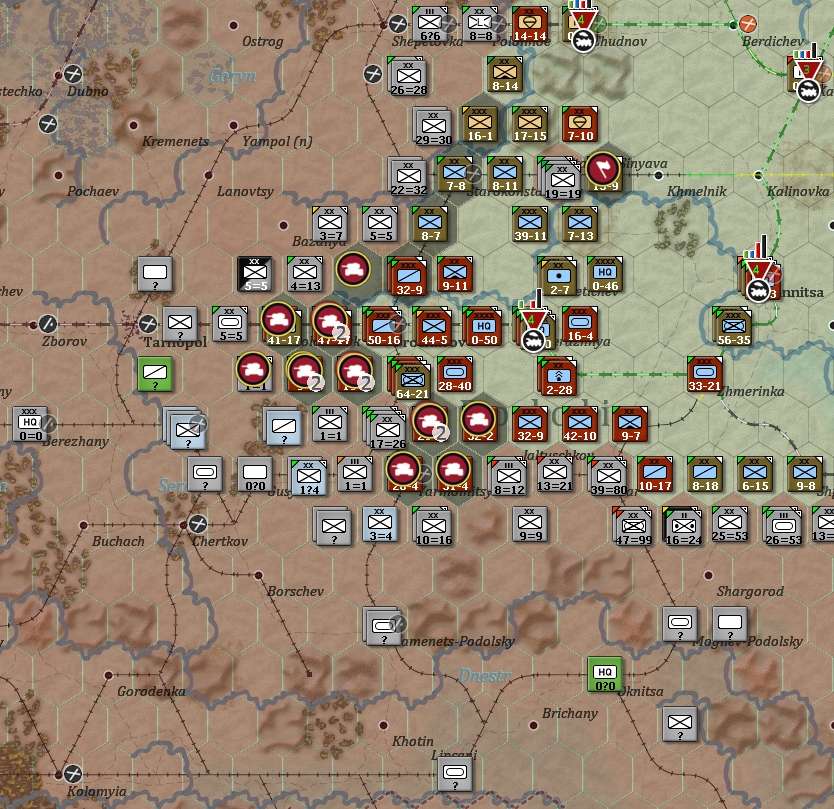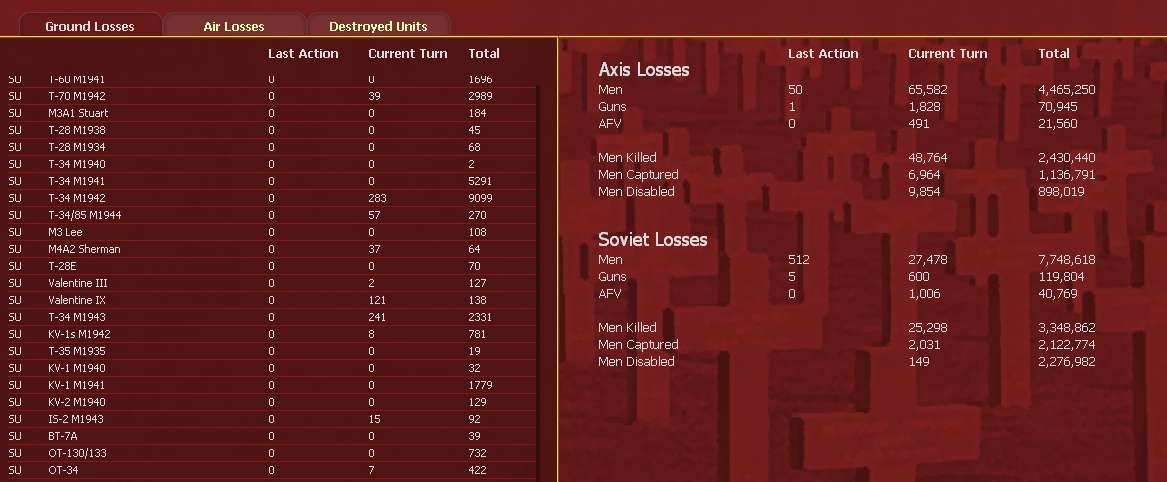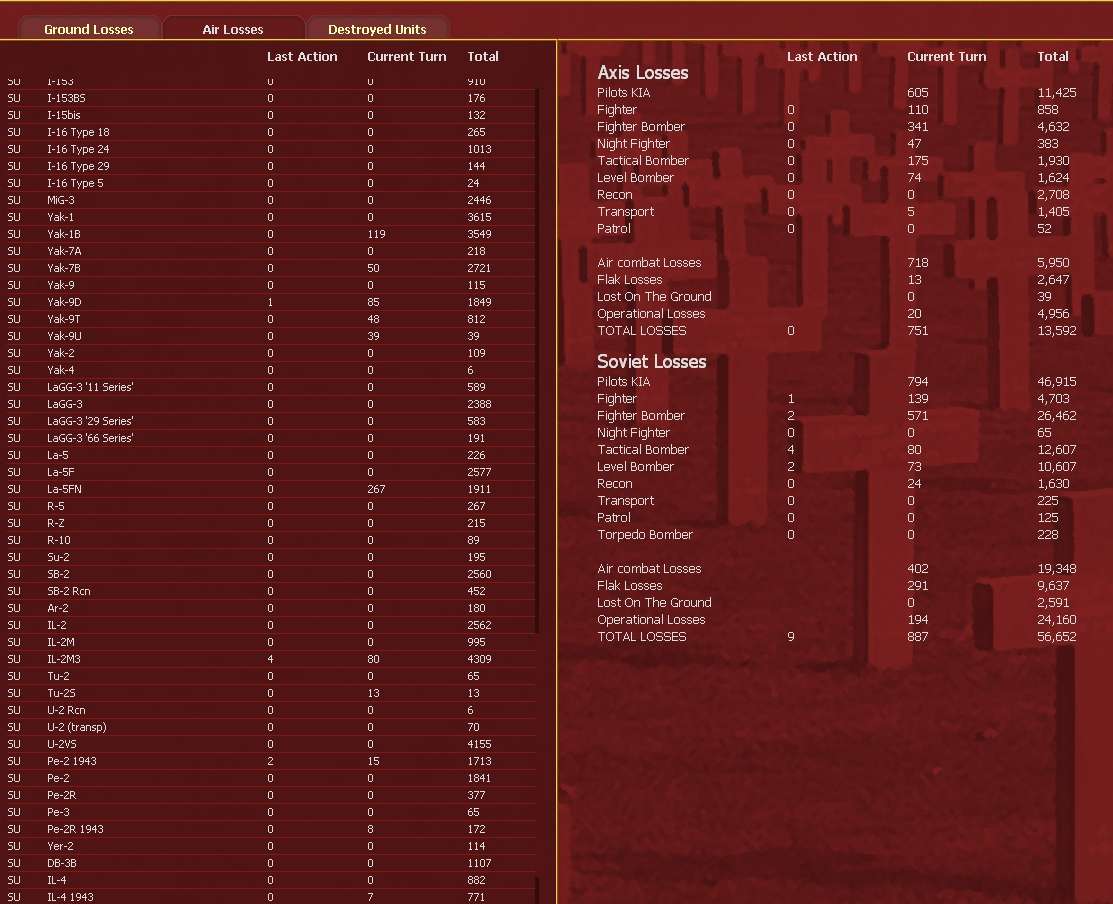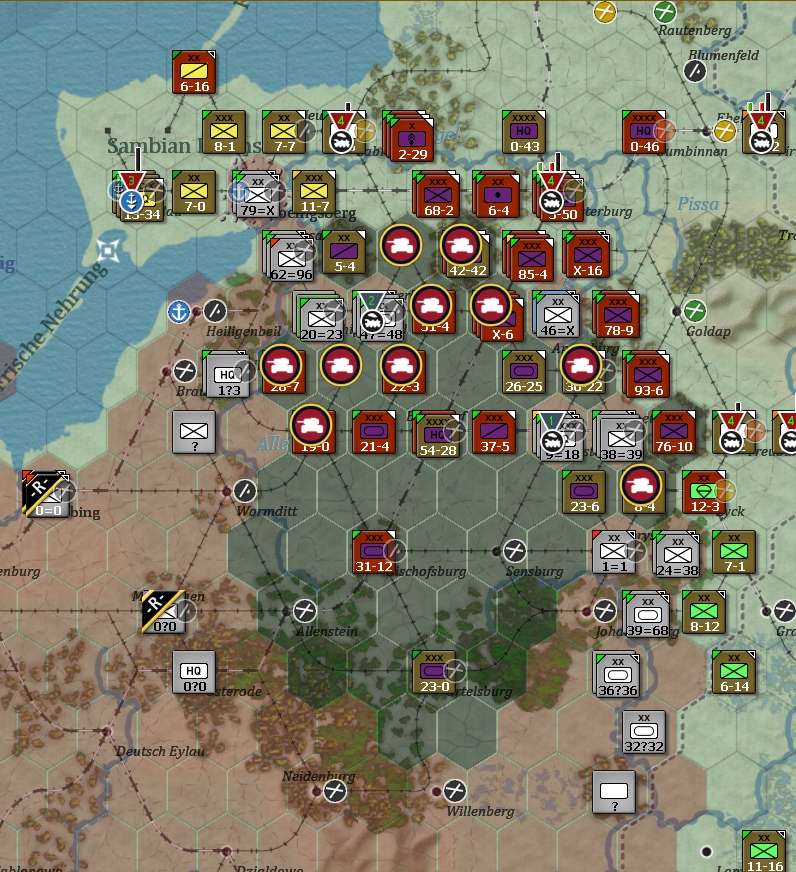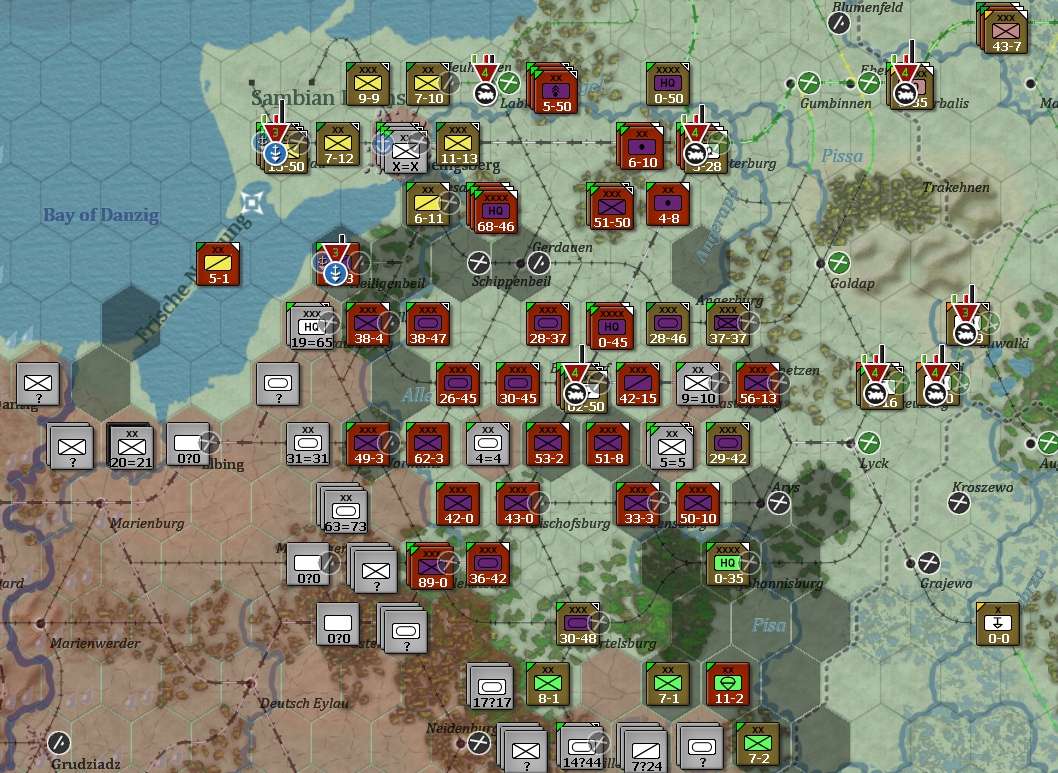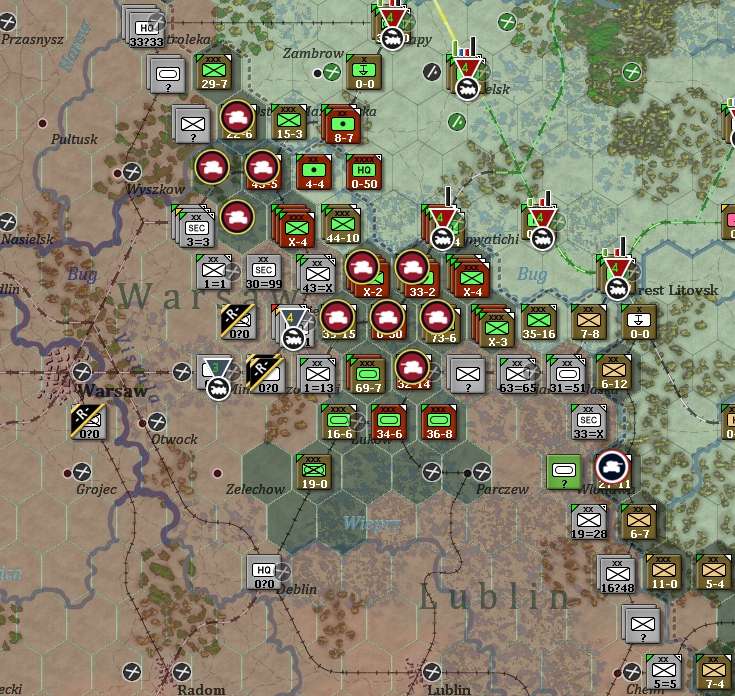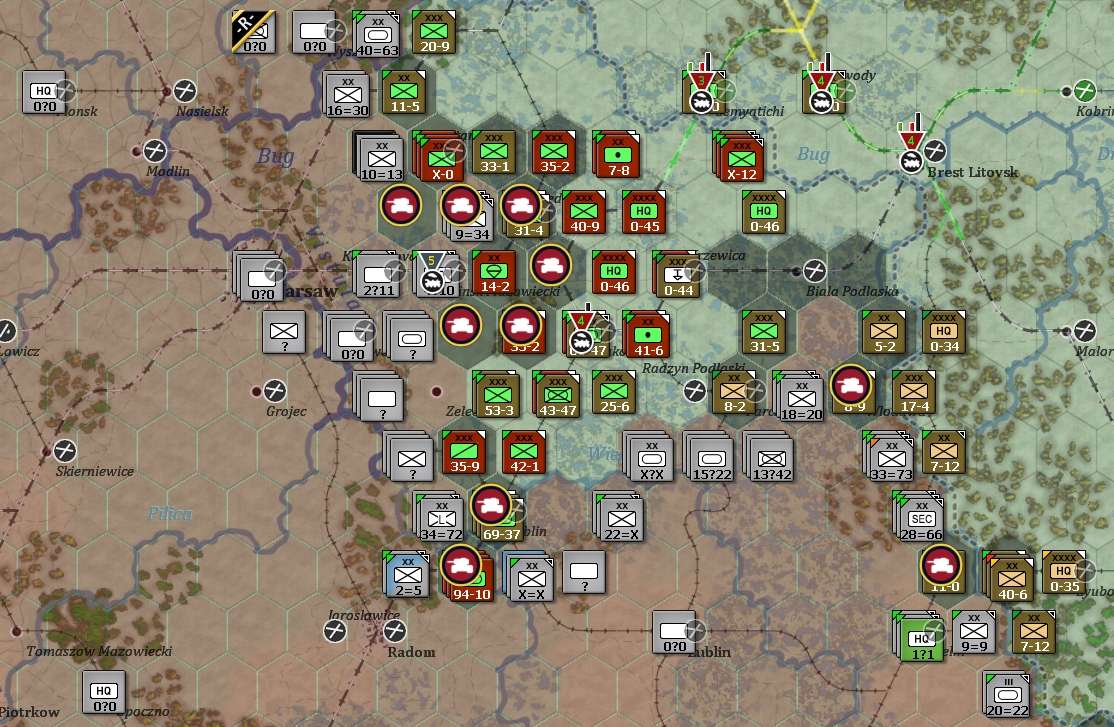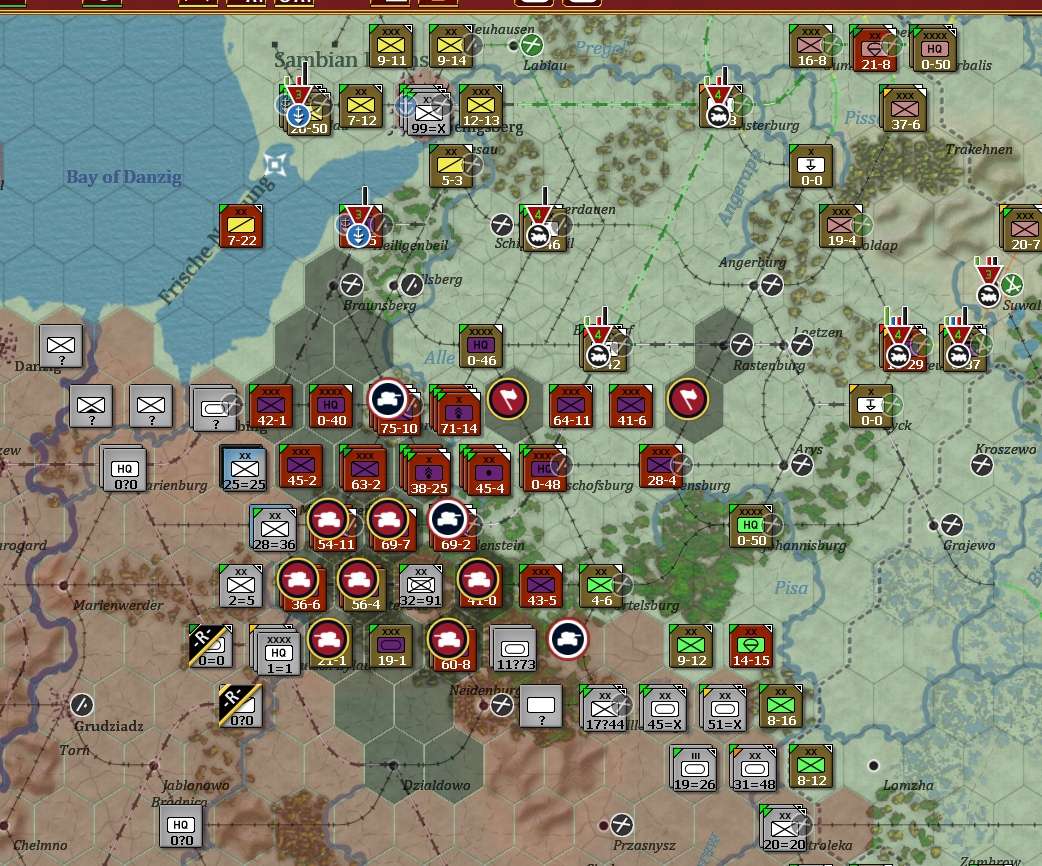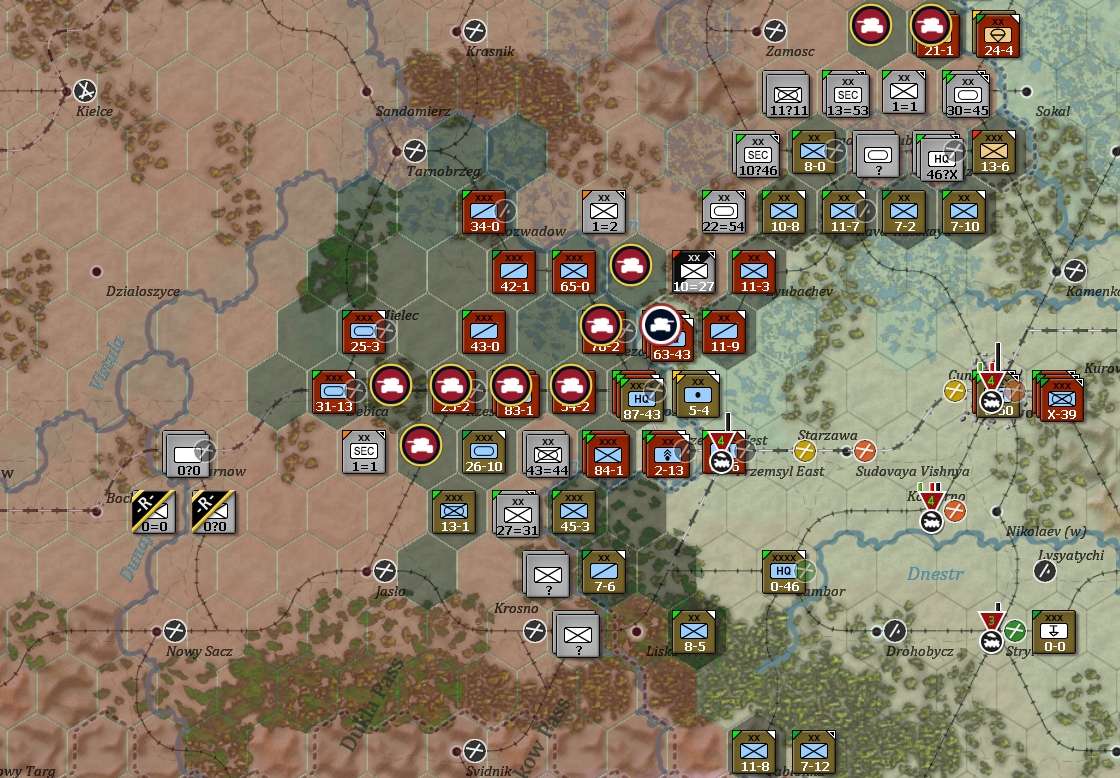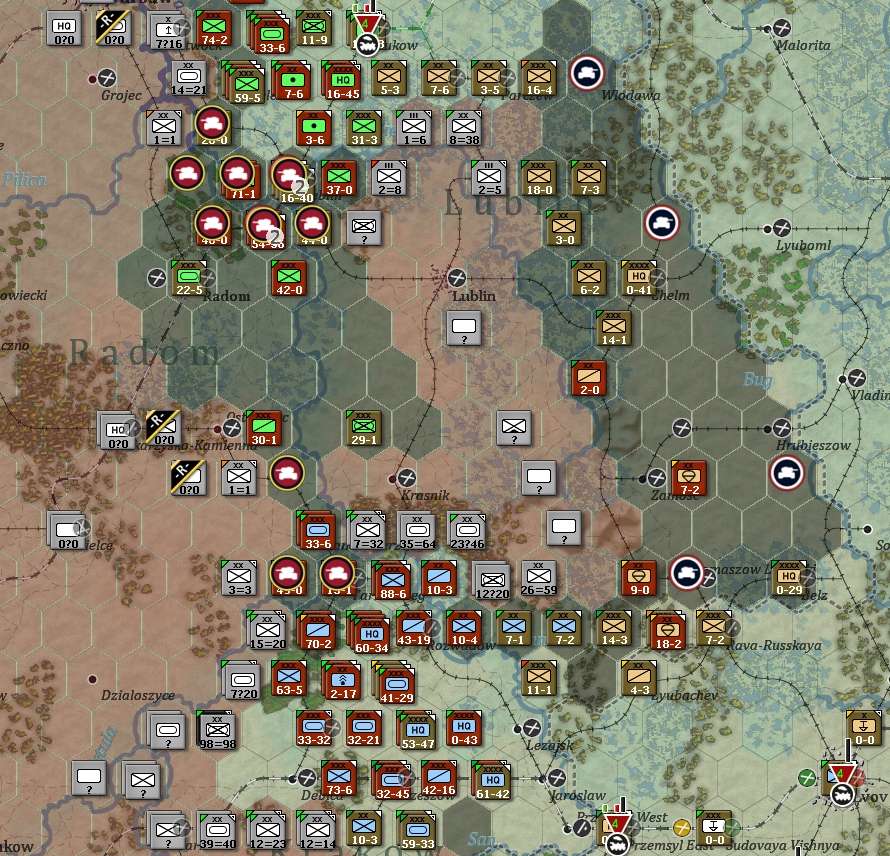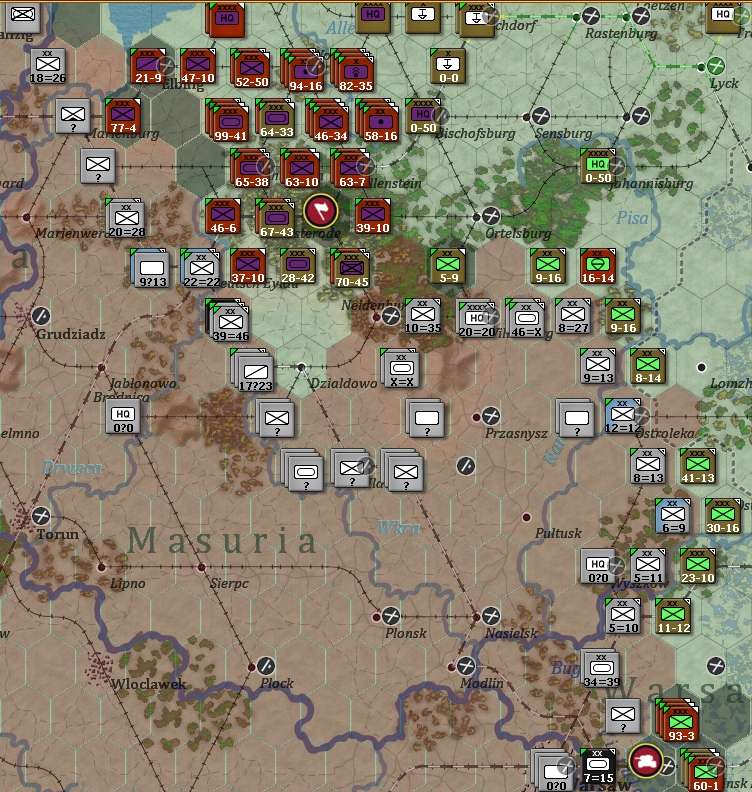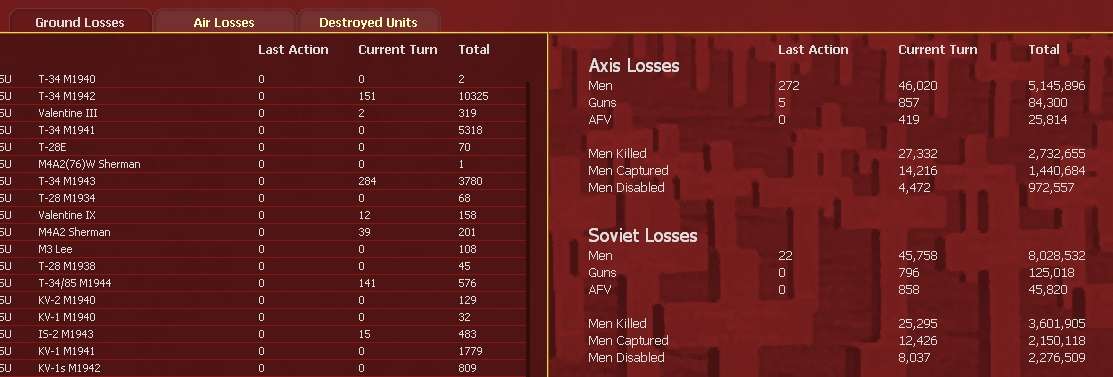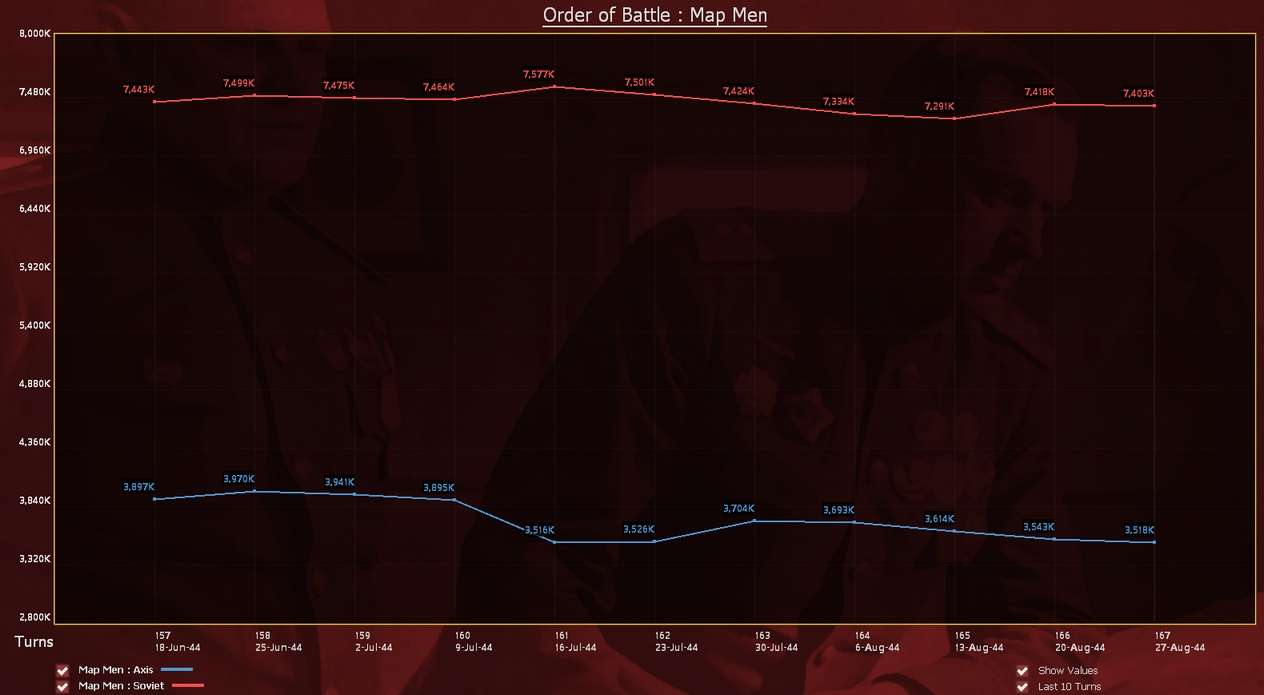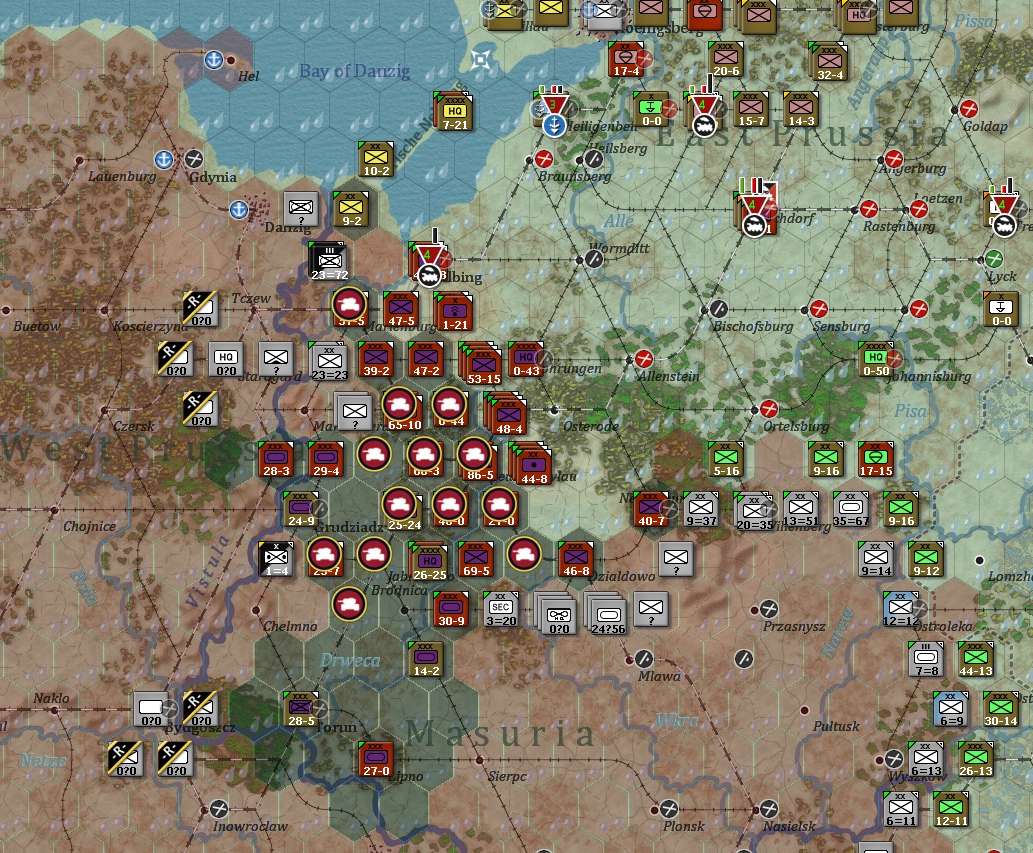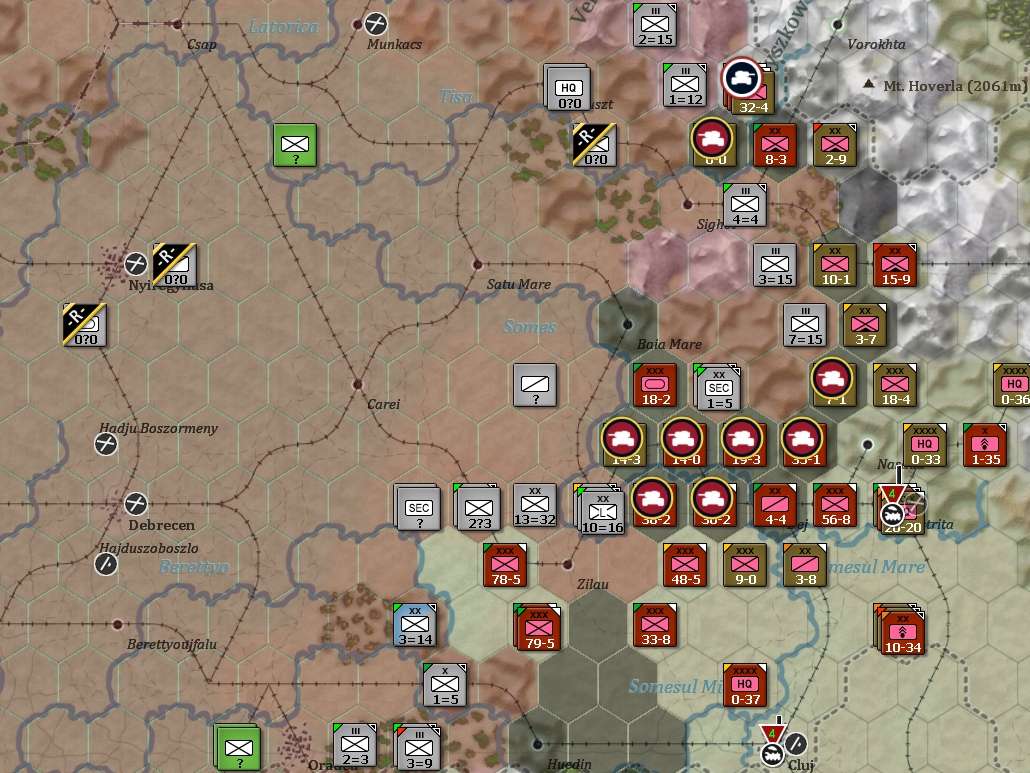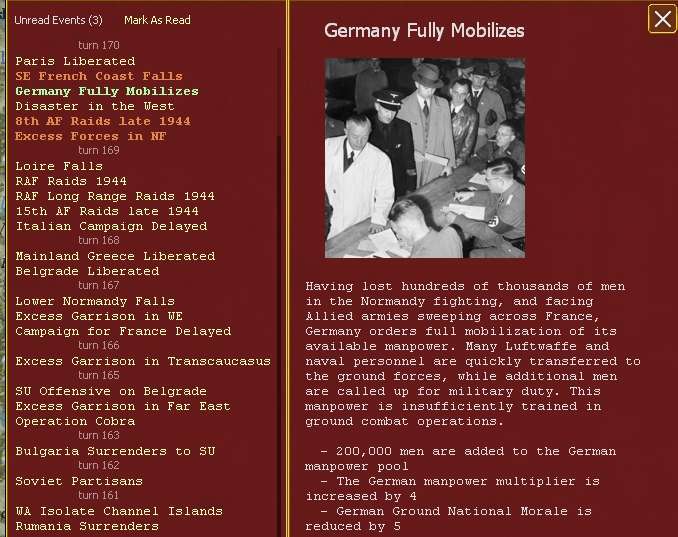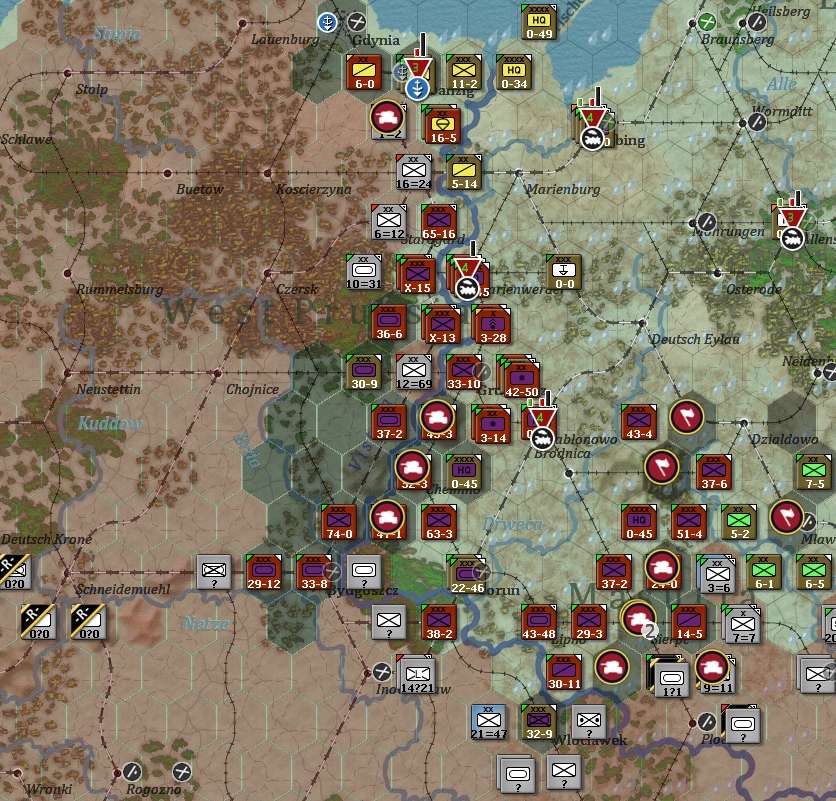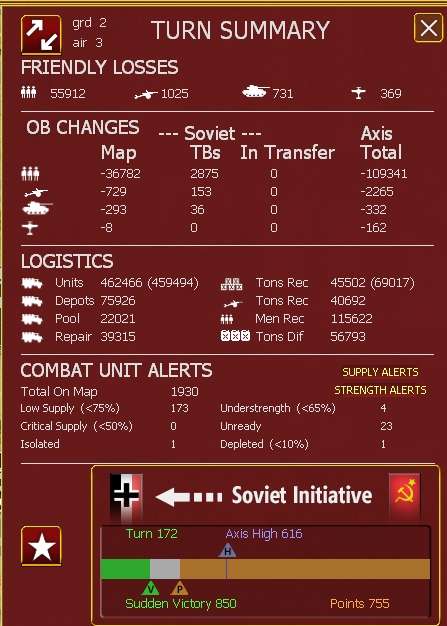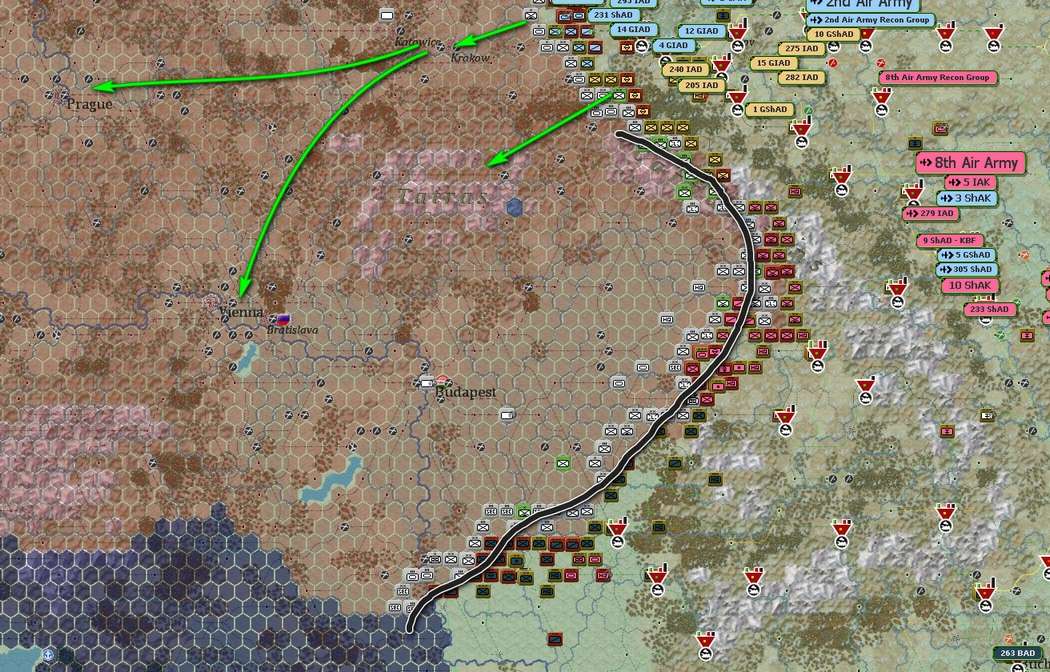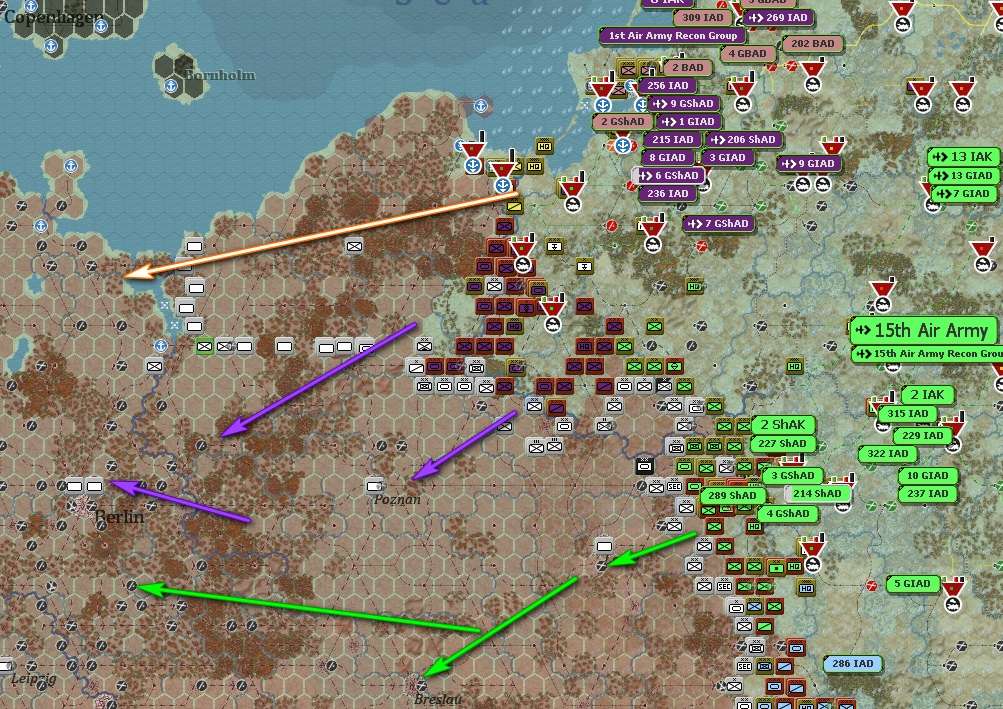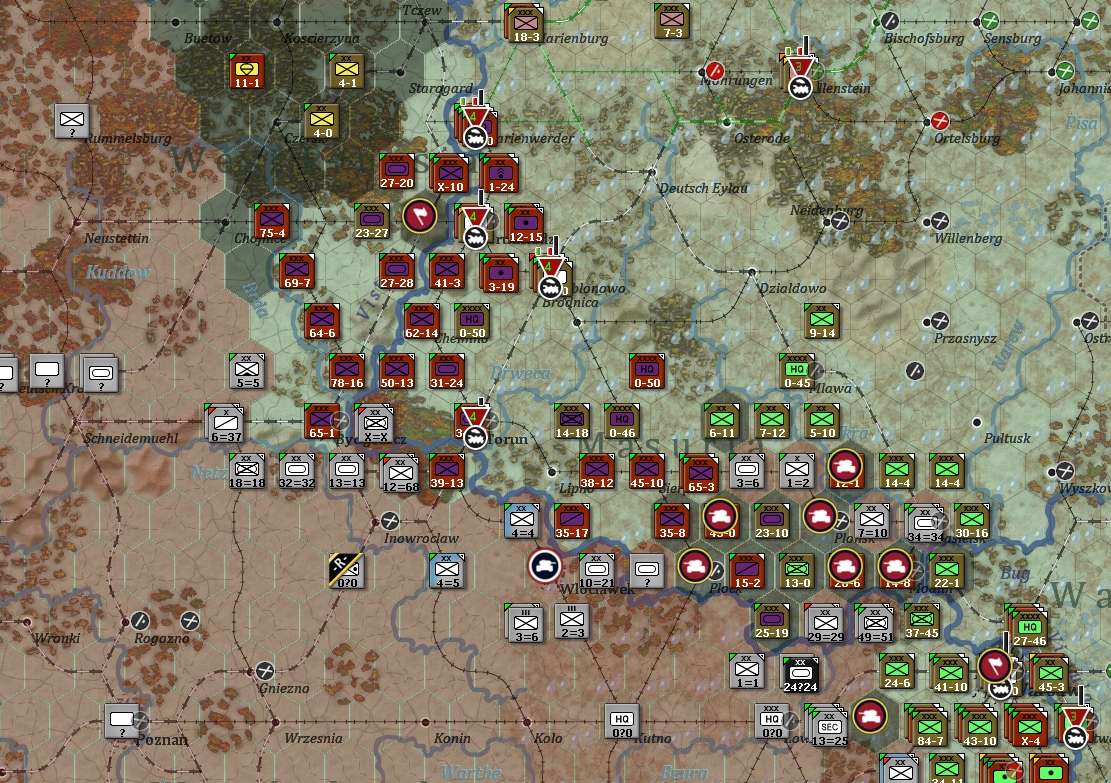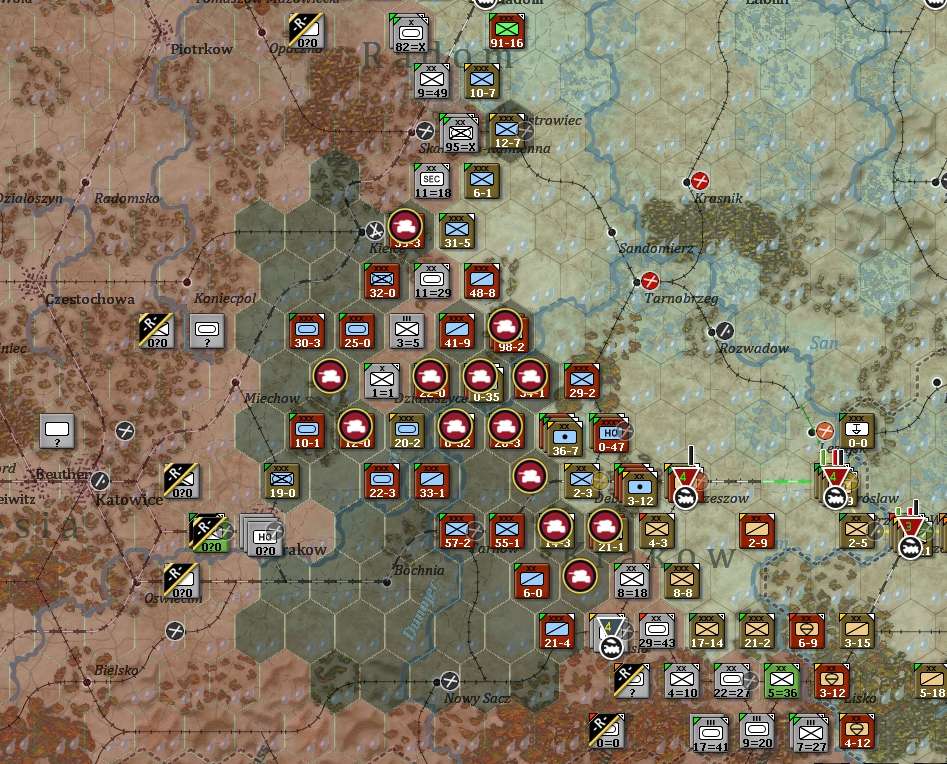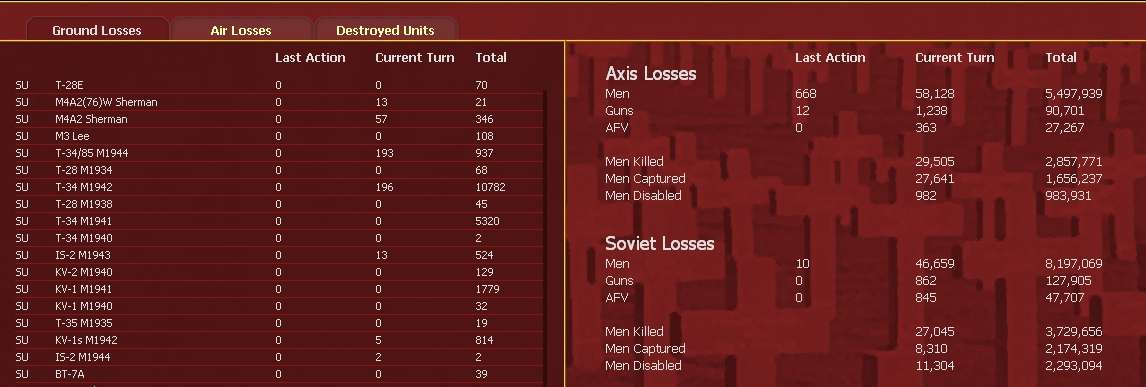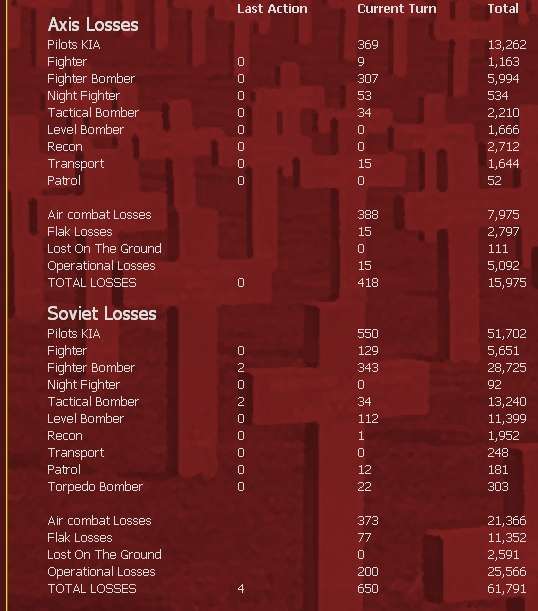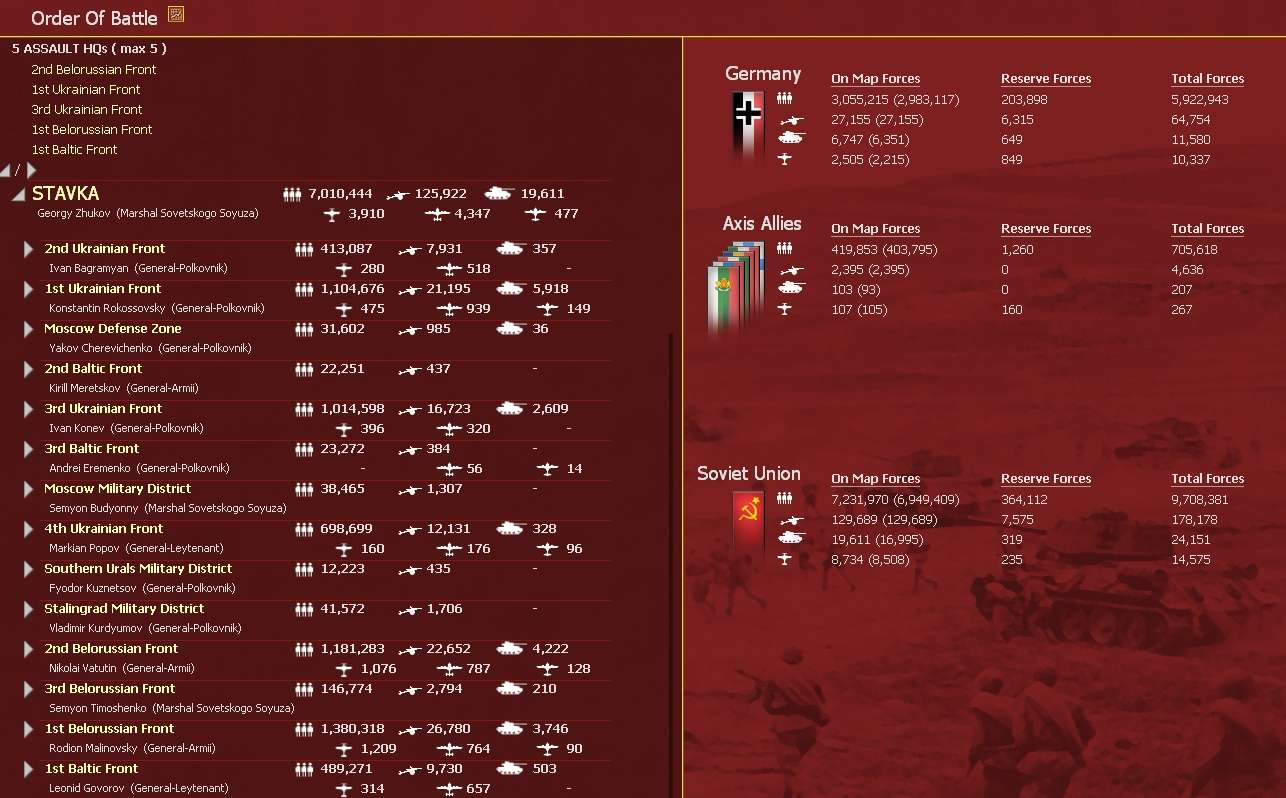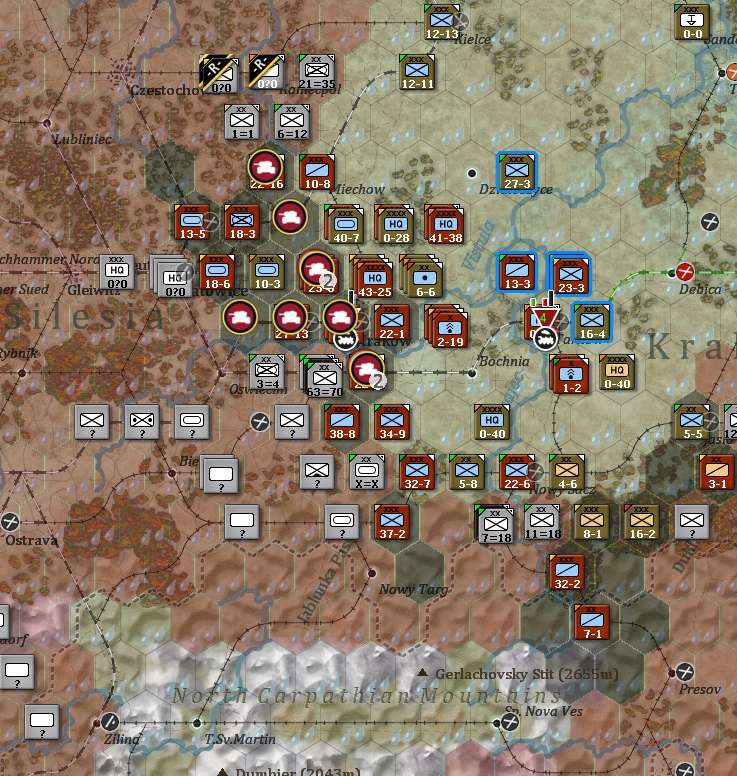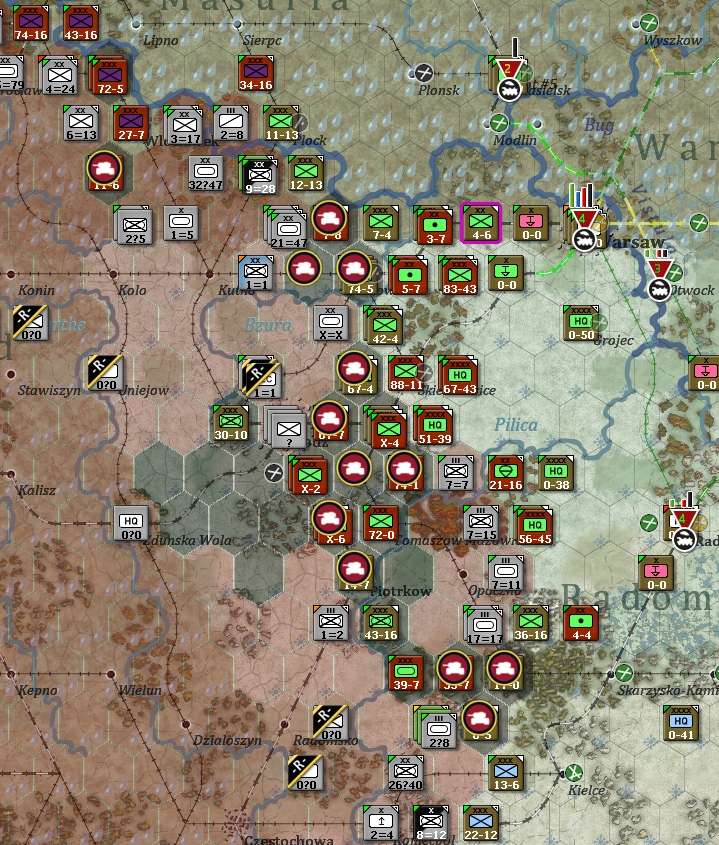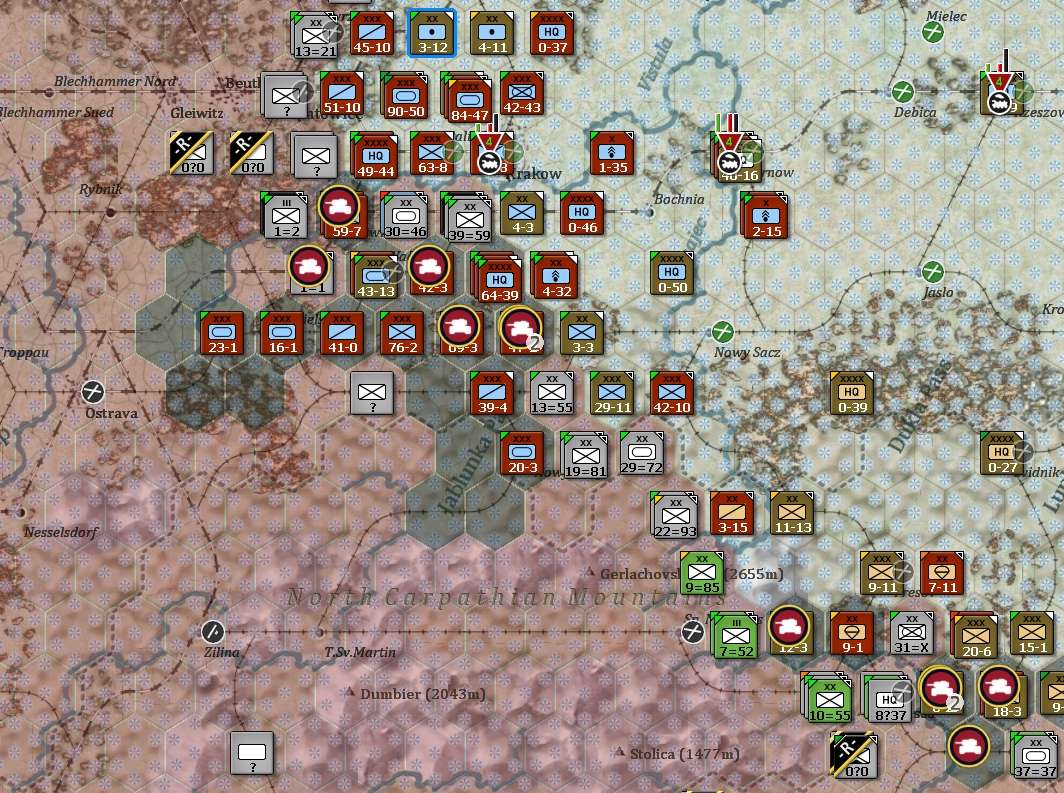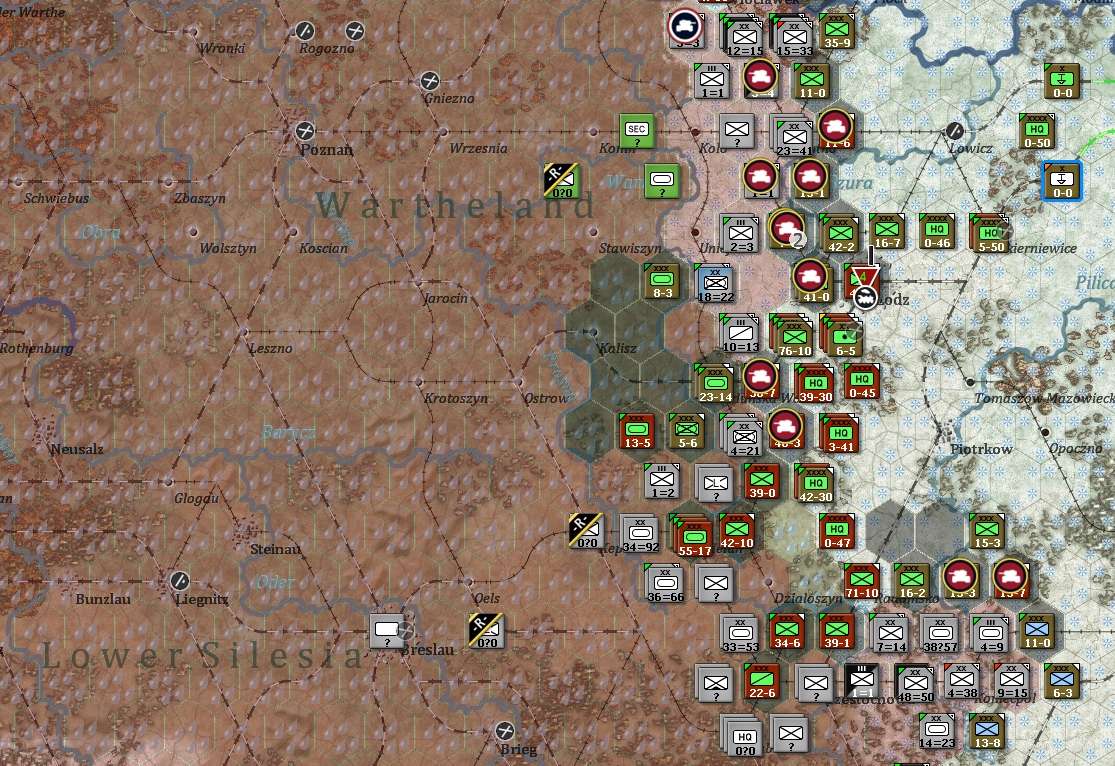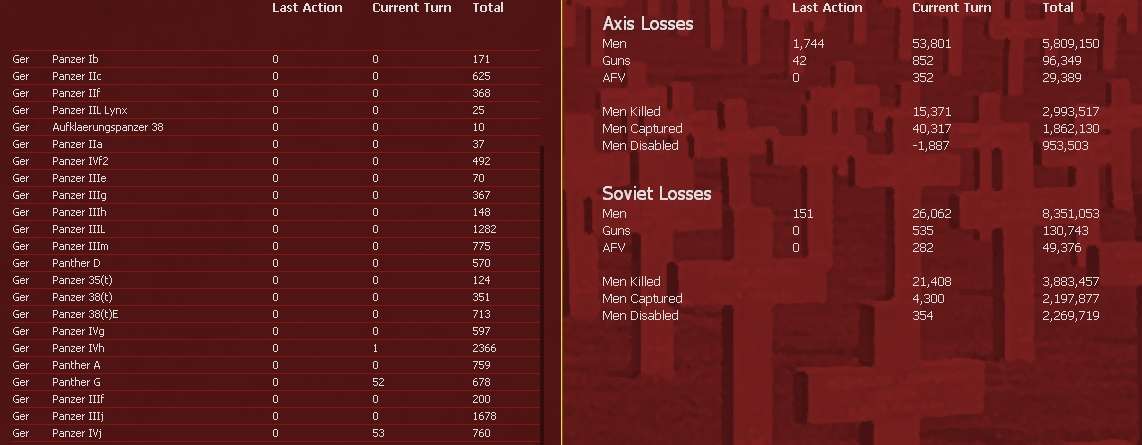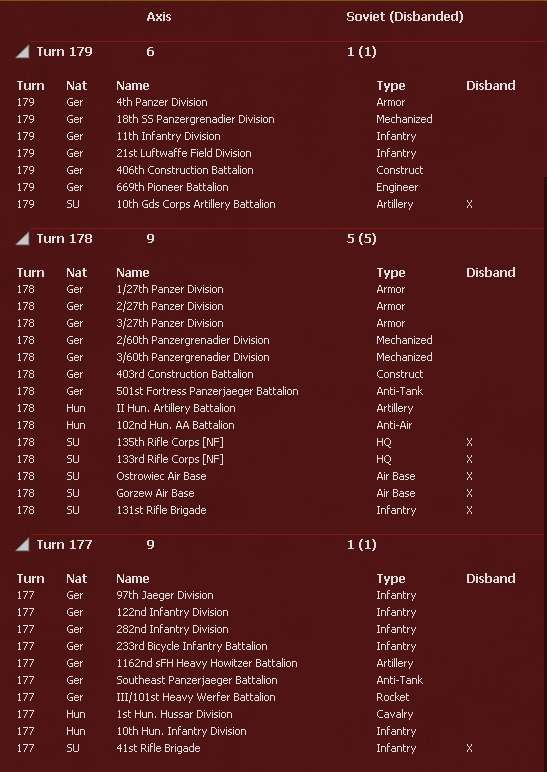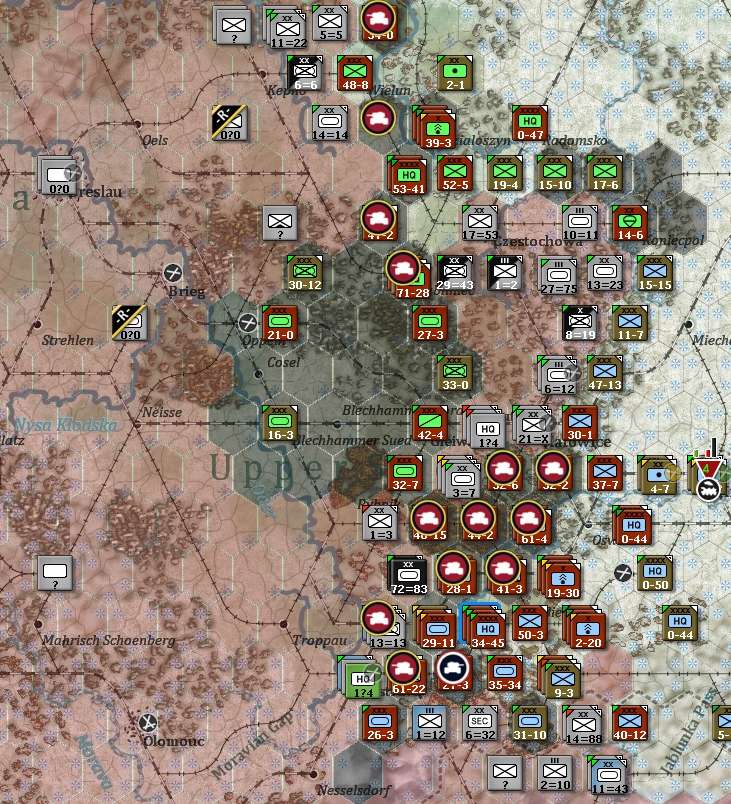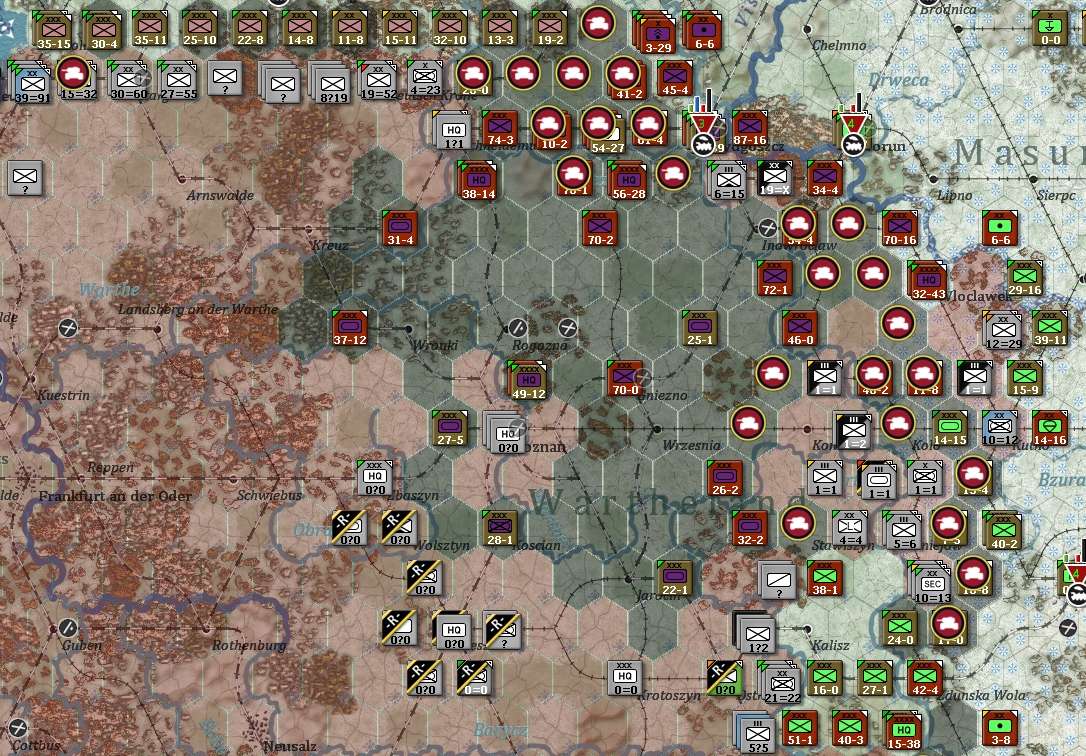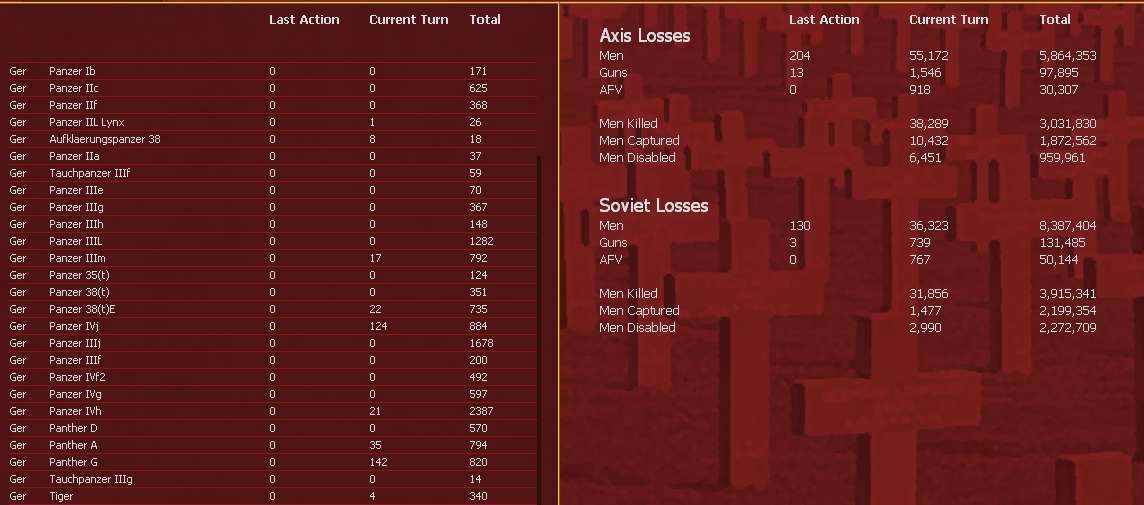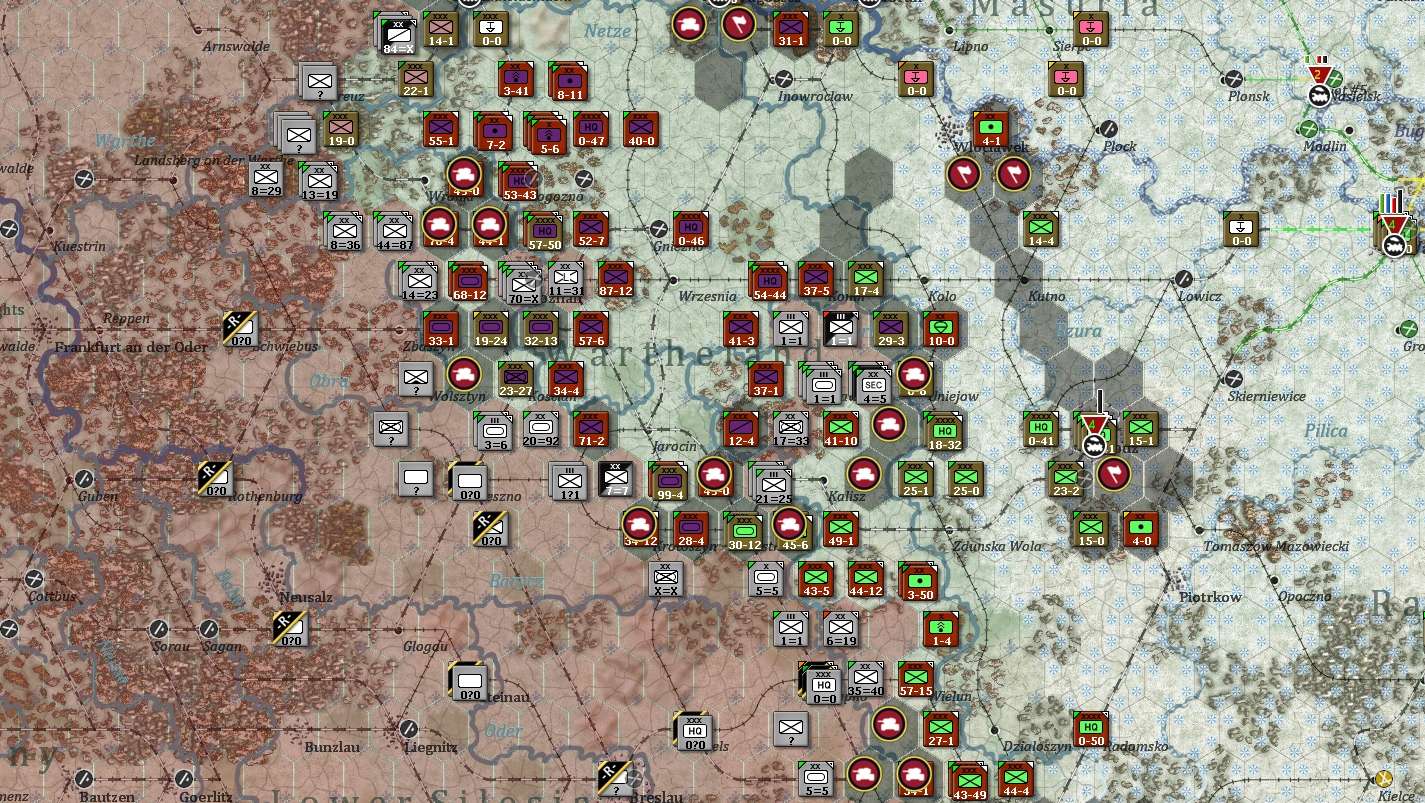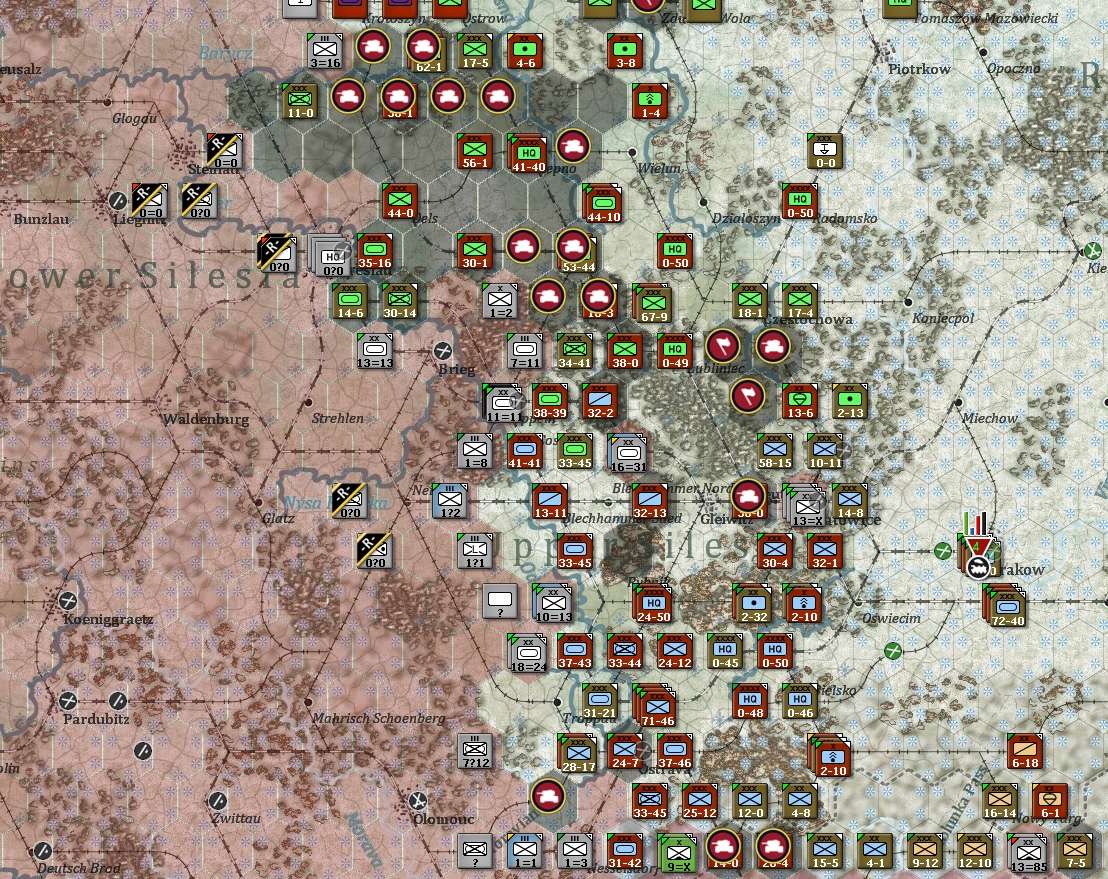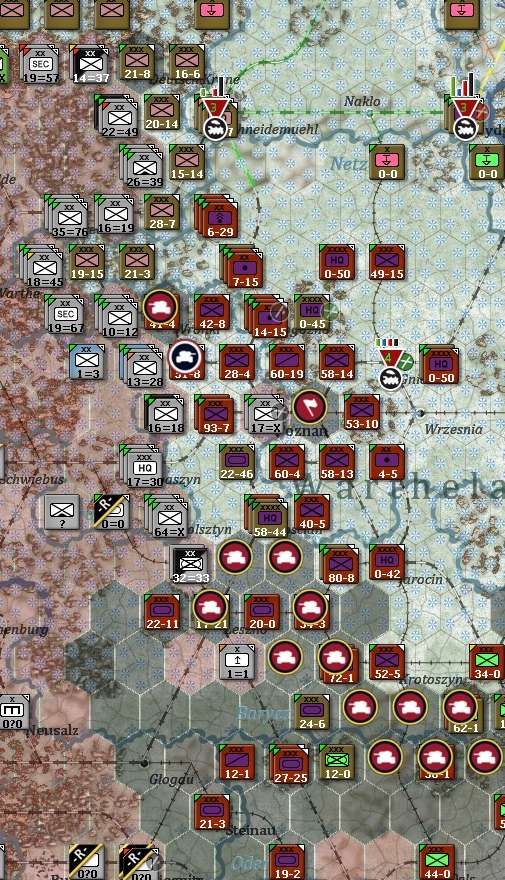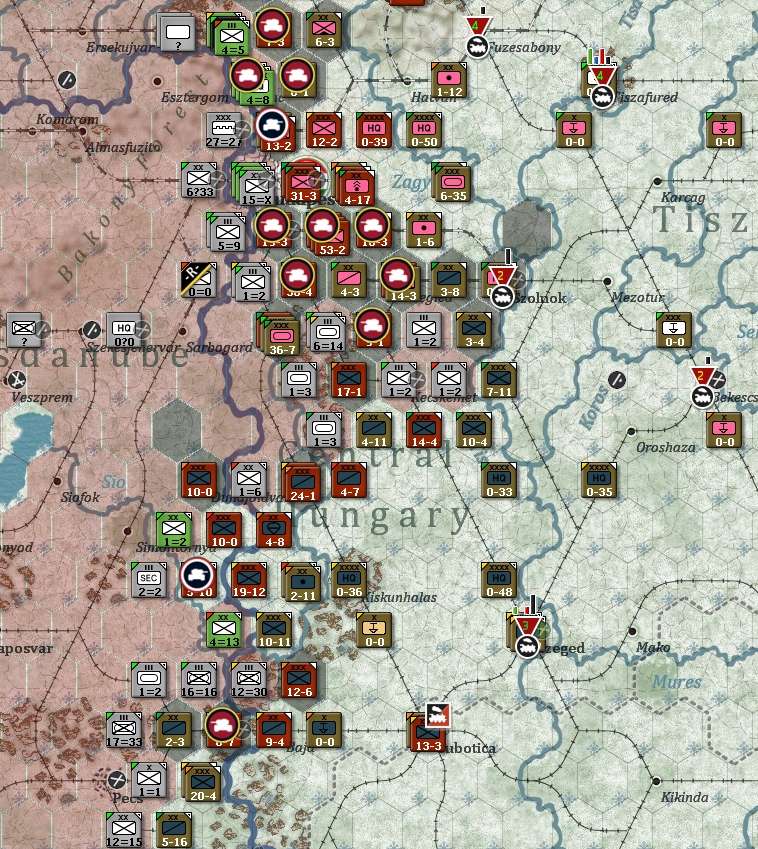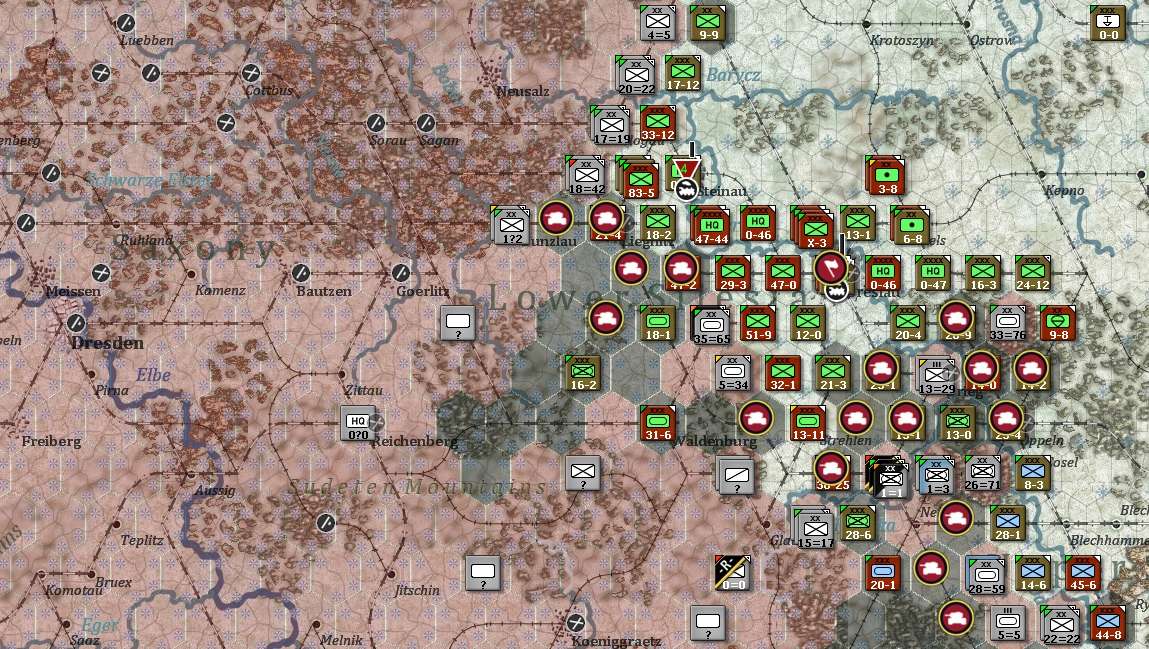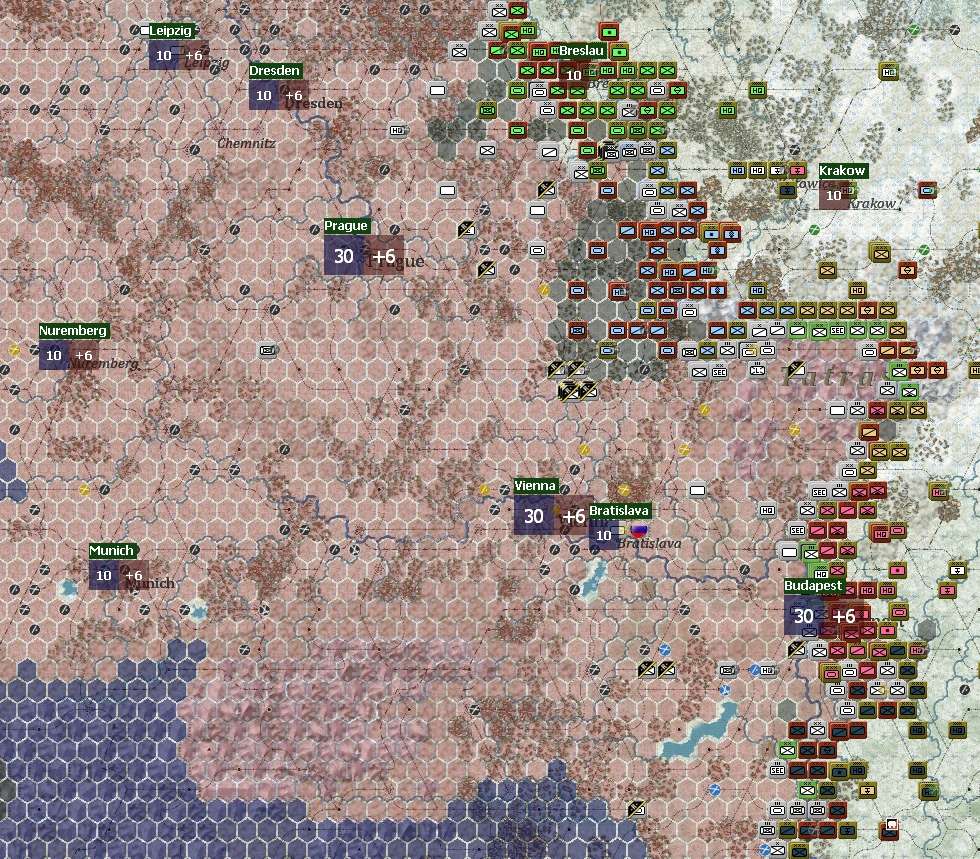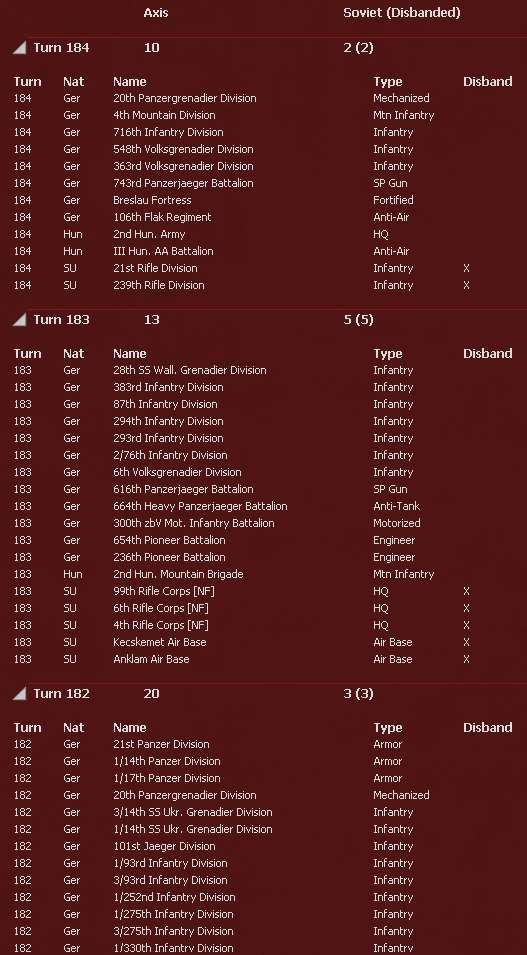22 July 1944
T156
Further series of German attacks ended the offensive in the Ukraine but with the Soviets having carved out a bridgehead over the lower Dnestr and well placed to take Lvov when they return to the offensive.
In the north, the Germans rebuilt their front lines and the bypassed formations became a major problem.
2 Blr had to divert 3GA to clearing the Germans back from the Neman north of Kaunas and 4GA had to move south to cover 1 Blr's northern flank. Despite this, the hastily constructed German defences around Marjampole were quickly overwhelmed and elements of 2TA and 5SA pushed 50 miles westward reaching, and crossing, the Prussian border in several places.

1 Blr's options were constrained by the strong German forces bypassed at Mosty and some localised German counter-attacks.
Despite this 5 and 8 GA again breached the German lines in hilly terrain along the border and elements of 4TA threatened to envelop the German defences at Bialystok as well as cut the rail line from E Prussia near Grajewo.
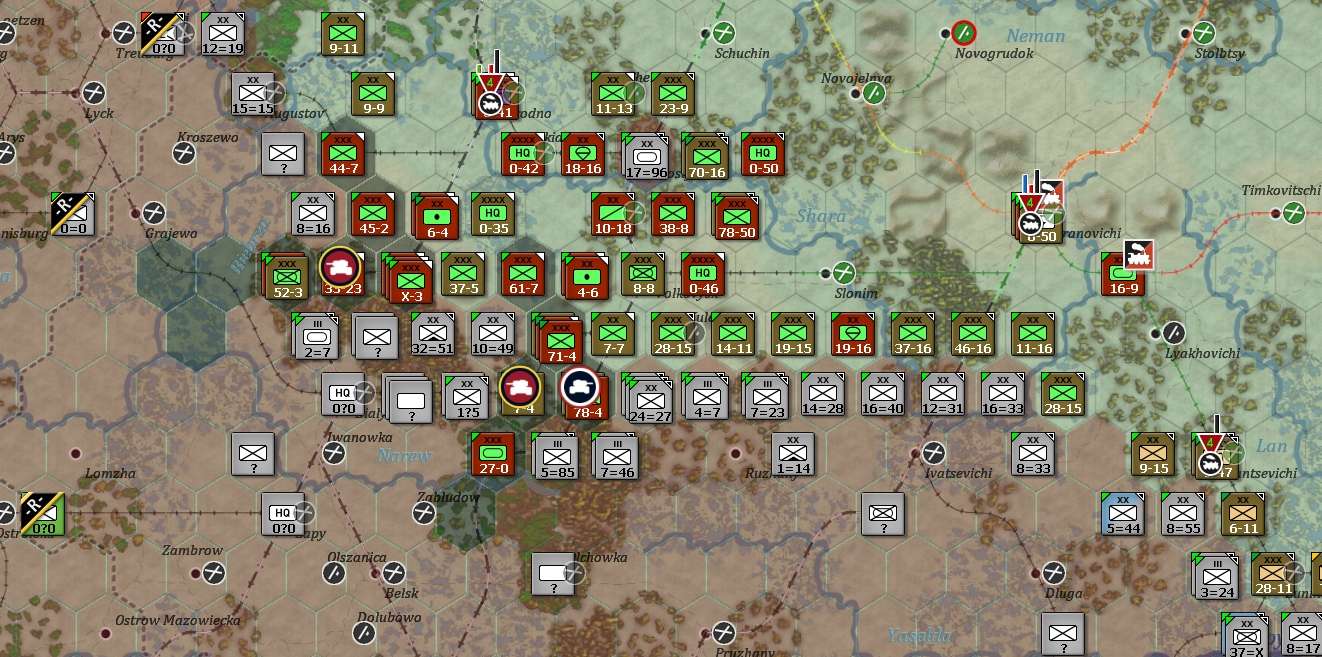
To provide additional mobility, Stavka ordered the immediate redeployment of 1GTA from the Ukraine [1].
T157
AI struck back hard, costing me a lot of tanks and rendering a number of my mobile formations out of action (as much low MP as any loss of CV). At the same time, AGN abandoned Riga and fell back into East Prussia [2]
Even though the advance was disrupted by the German counter-attacks, 2 Blr broke the German defensive line at Ebenrode and 2 TA was able to push deep into Germany with recon formations only 10 miles from Rastenburg (so one presumes the local wolf population is much diminished).
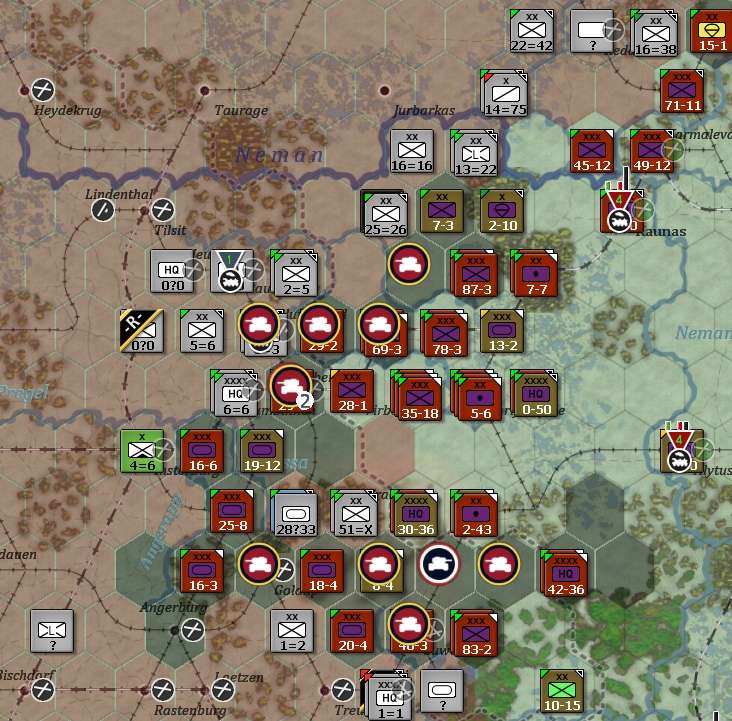
In contrast, 1 Blr went over to the defensive and eliminated the bypassed formations. The arrival of 1 GTA will provide much needed mobility.
T158
The start of July saw 2 Blr forced over to the defensive by German counter-attacks. This time, 1 Blr managed to regain the initiative, reinforced by 1 GTA, and broke the German defensive lines.
Soviet tanks rapidly (40+ MP does help) exploited the disruption, liberating Bialystok while Soviet cavalry cut the Brest-Ivatsevichi rail line threatening the supply lines to all the axis forces defending Pinsk.
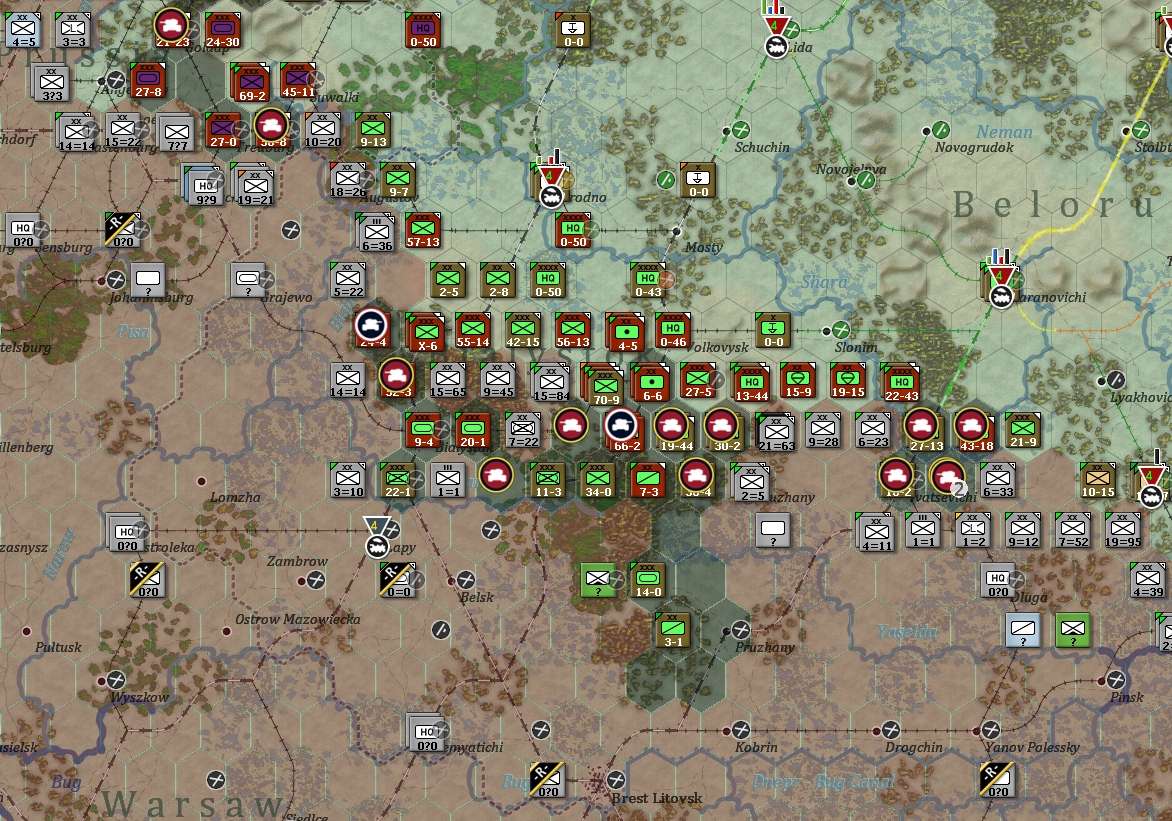
In the Ukraine, 3 and 4 Ukr faced a localised offensive that made it hard to recover and re-organise for the offensive into Rumania. To relieve the pressure, 1 Ukr attacked towards Tarnopol.
It quickly became apparent that the Germans had not expected an early resumption of the offensive and had committed most of their mobile units to the recent attacks on 3 and 4 Ukr.
Cavalry from 1 SA took Tarnopol and Soviet tanks struck deep into the German communications almost capturing Dubno and Brody and leaving the axis units in the south dependent on the rail line running through Stanislav.
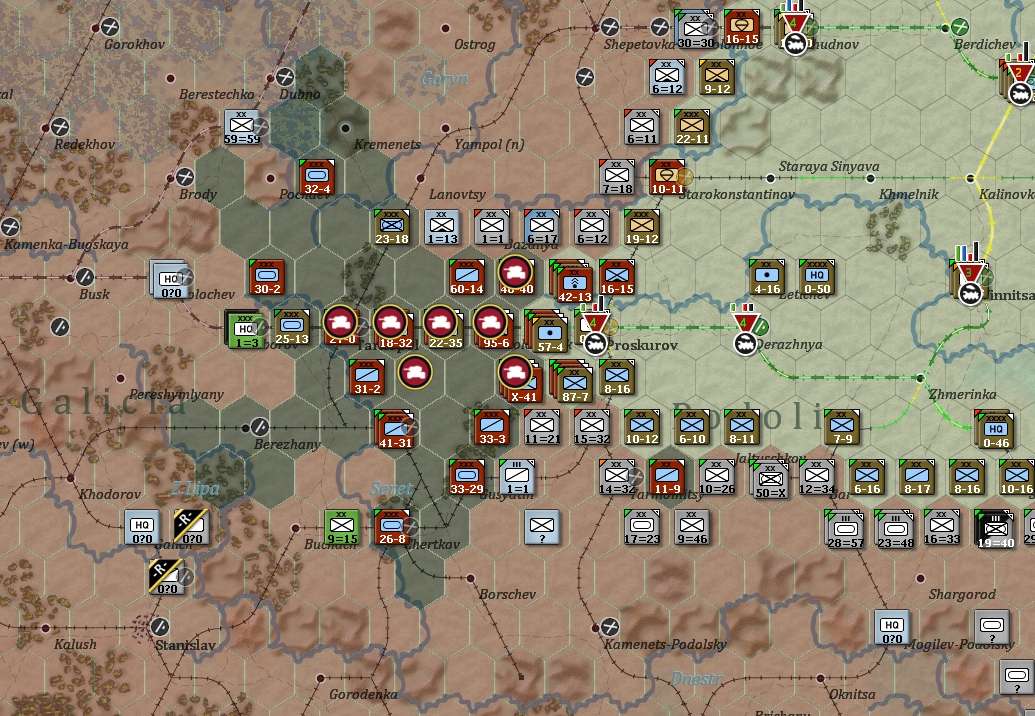
You can see a 'super-depot' in place at Vinnitsa, the co-location of a HQ and a NKPS both increases the depot capacity and ensures it fills up (to some extent at the cost of the wider network).
T159
Both 1 and 2 Blr faced constant attacks but there was evidence the German forces were weakening. 2 Blr swapped its angle of attack to the west rather than south-west. With their local reserves entangled in running battles with 1 Blr the Germans had weakened this sector. By the end of the week, Soviet tanks had secured the south bank of the Neman and were within 20 miles of Koenigsberg.
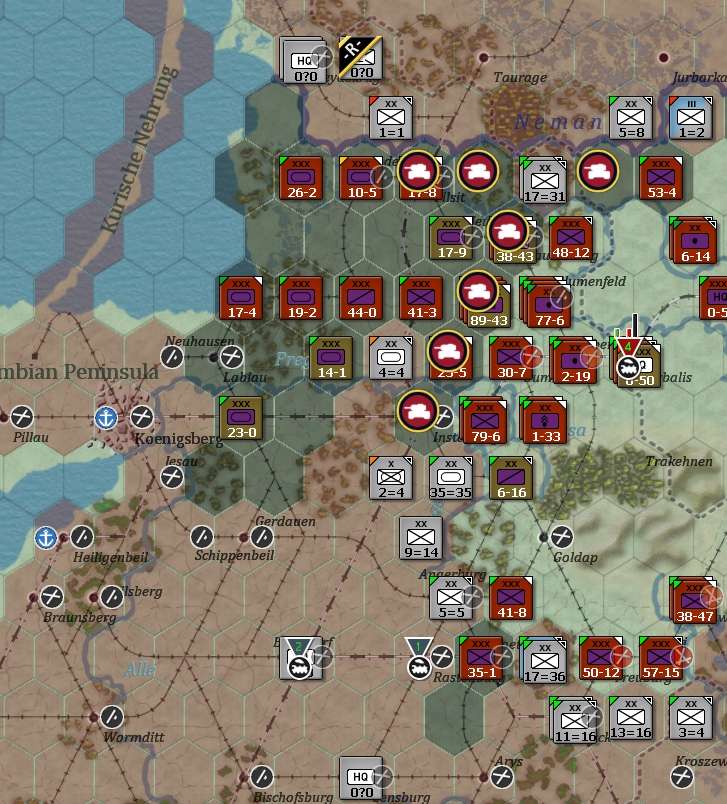
Despite the localised counter-attacks, 1 Blr made further gains, reaching the Polish border and partially encircling a number of German formations.
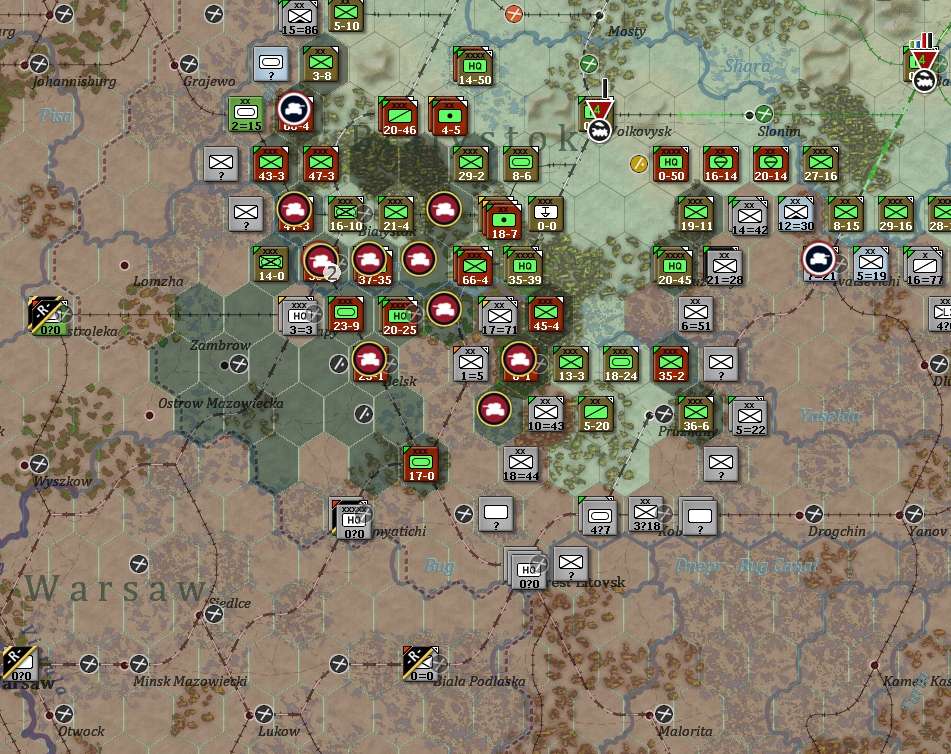
In the Ukraine, 1 Ukr's offensive had pulled the German reserves which had forced it to retreat, but the effect was to allow 3 and 4 Ukr to break out deep into Bessarabia and elements of 5 GTA were within 10 miles of he Rumanian border.
T160
As the front narrows, pulling some of the formations from the Baltic region into Stavka reserve. Also disbanding a number of non-Gds fighter groups, I have plenty on the map (and am no longer having to send so much to the reserve to recover) to give me a large cadre of pilots. Yak-3s and the useful 9M/9U starting to appear in numbers.
Offensive in the north briefly suspended as the Germans recovered and the need to rest and rebuild the supply nets.
1 and 2 Ukr also paused their main operations as they dealt with the large pocket at Proskurov, however, 5A was able to break through the main German line and cavalry formations liberated Rokitno increasing the supply problems for the axis forces in this sector.
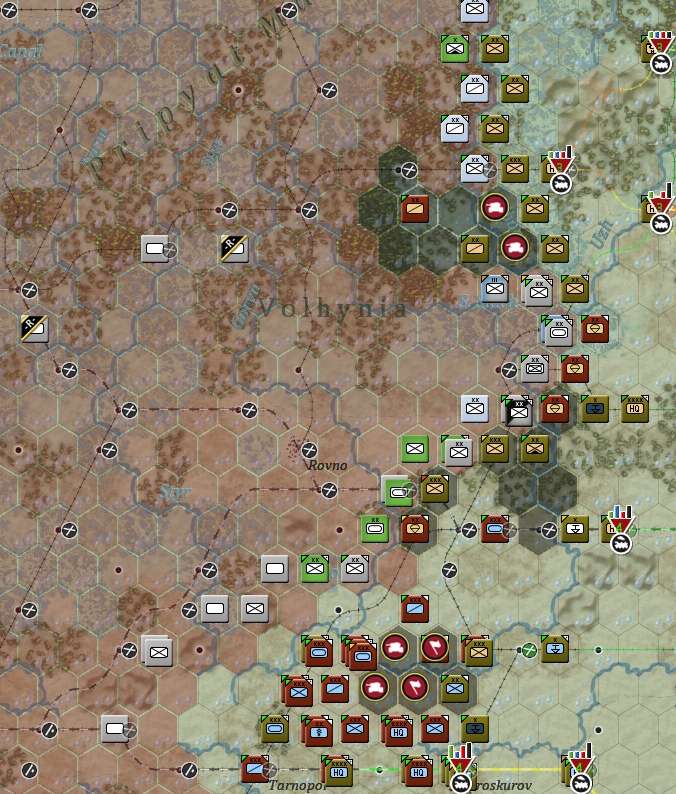
For bonus pts, spot the 'super-depot', as I cross the 1941 borders these become absolutely critical.
To the south, 4 Ukr concentrated on over-running the Dnestr pocket but still managed to break the German defensive line on the Kogilnik enabling elements of 6 TA to push into Moldavia. To the north, 3 Ukr had no problems with bypassed axis units and was able to push across nothern Bessarabia and end the week with its tanks on the Romanian border.
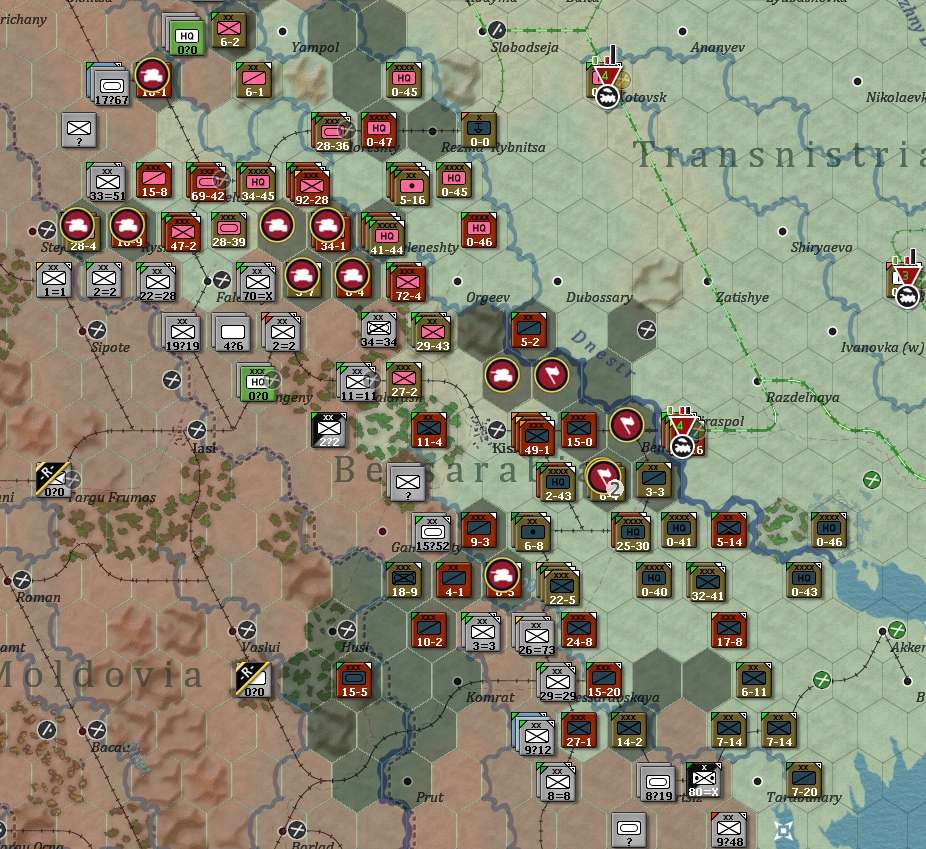 T161
T161
The Finnish armistice was secondary to the main campaign, but this turn Rumania surrendered but the Germans seemed to have been suspicious of their allies and were already in full retreat in the south [3].
So the big news is the collapse of Rumania after 6TA pushed over the border. In the meantime the Allies do something important in Jersey and Guernsey.
E-Stalin sends a passive-aggressive telegram of congratulations, while E-Hitler checks that he has Horthy's address for the planned exchange of christmas cards & butters him up by sending pictures of nice shiny battleships (remember Horthy really was an Admiral).
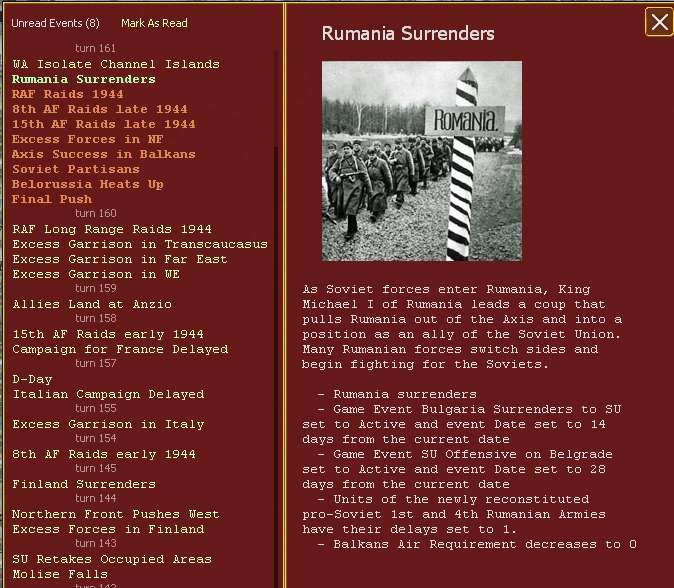
The AI has responded pretty sensibly with a massive retreat though some units in Moldavia look to have been trapped.

So that long planned air-naval invasion proved to be useful as Soviet paratroopers are airlifted to secure Bucharest and Ploesti while elements of the Coastal Army disembark at Constanta.
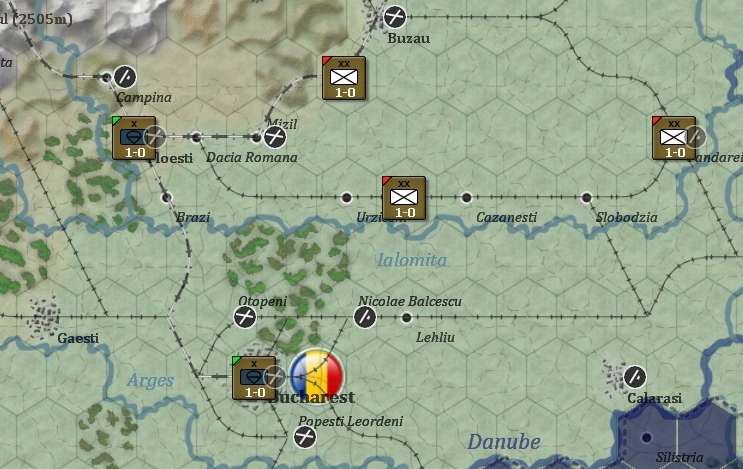
Along the Soviet-Polish border regions, much the same happens everywhere. Soviet patrols are pushed out to find the new German defensive line while the assault armies take the chance to re-organise and recover. Early reports suggest a massive German defensive commitment to Koenigsberg but that is now secondary and can be taken by 1 Baltic once the Lithuanian pocket is destroyed.
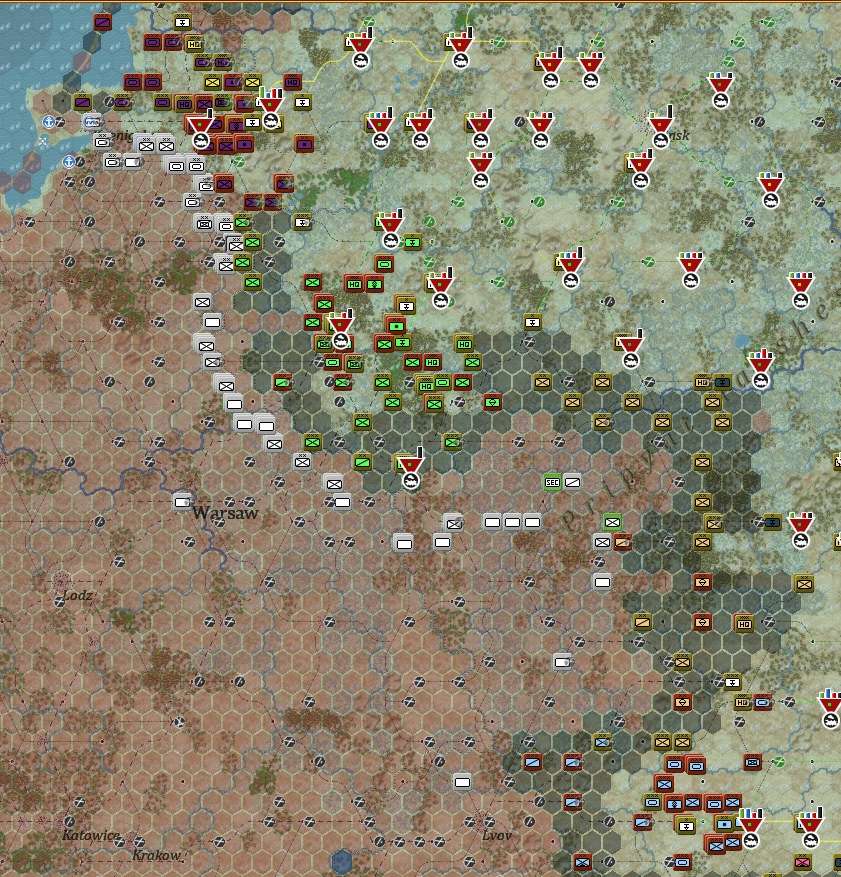
4 Ukr is currently one of the largest as it has absorbed the Rumanian formations – most of those will be in reserve soon enough but need the ones in Rumania proper for the moment and the mountain divisions are going to be very useful.

Probably a good time for a VP discussion.
So that is Rumania gone 6 weeks early (well more strictly Bucharest and Ploesti taken early). Fears of the HWM evaporate (even if the AI had matched the StB score) and I know think there are 2 potential ways to win. The April 1945 auto-win target is feasible (if I can make progress into Hungary and Austria - which is a logistics challenge) or Berlin before the end of May.
In the south, there are 70 feasible pts (100 if you include Prague) but unless the AI collapses then they are not going to be easy.
Ignoring Berlin (& cities that the Soviets never took) there are 190 VP available (say with 56/66 bonus pts), That is another +250.
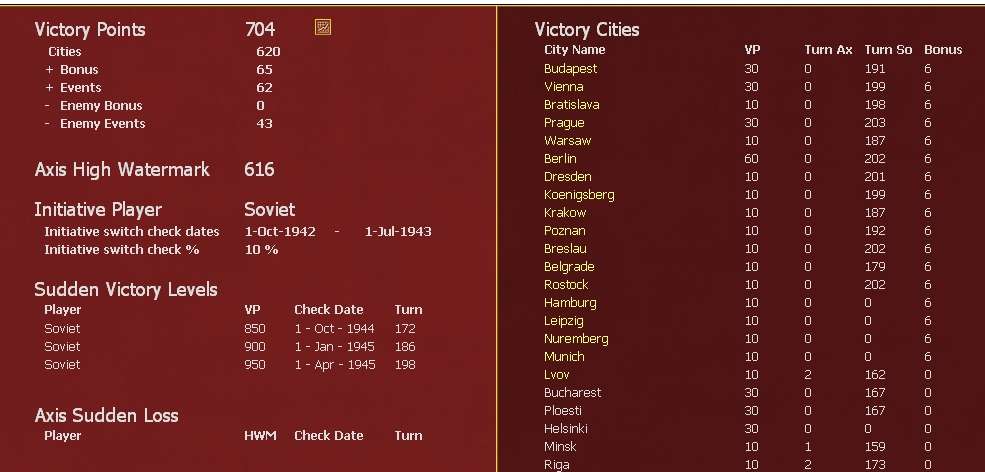
On what is now the main sector, Warsaw and Lvov are my obvious next targets (Koenigsberg is rather well defended) then nothing significant till I reach the Oder-Elbe sector.

Another major re-organisation will see 1 Baltic assigned to Koenigsberg, 2 Blr to drive into E Prussia and 1 Blr towards Warsaw. The hope here is to join up with 1 Ukr.
[1] Clearly I should have done this during the spring rains but was hoping to resolve my supply situation and then use this army
[2] Sensible, no Courland pocket for E-Adolf
[3] It is very vulnerable as one of the trigger locations is right on the border with Bessarabia. This is one of those instances were a German player is very aware of the tight-rope once the Soviets are over the Dnestr but the AI is a bit less aware of specific locations. Still it responded annoyingly well.
The Soviets gain the Rumanian rail net intact but then lose any hexes that flip back to German control. In this case, I hold the rails in central Rumania but the links back to the Dnestr are all broken. Constanta is the only way to bring supply into this sector at the moment.
Still E-Adolf is fast running out of friends.


